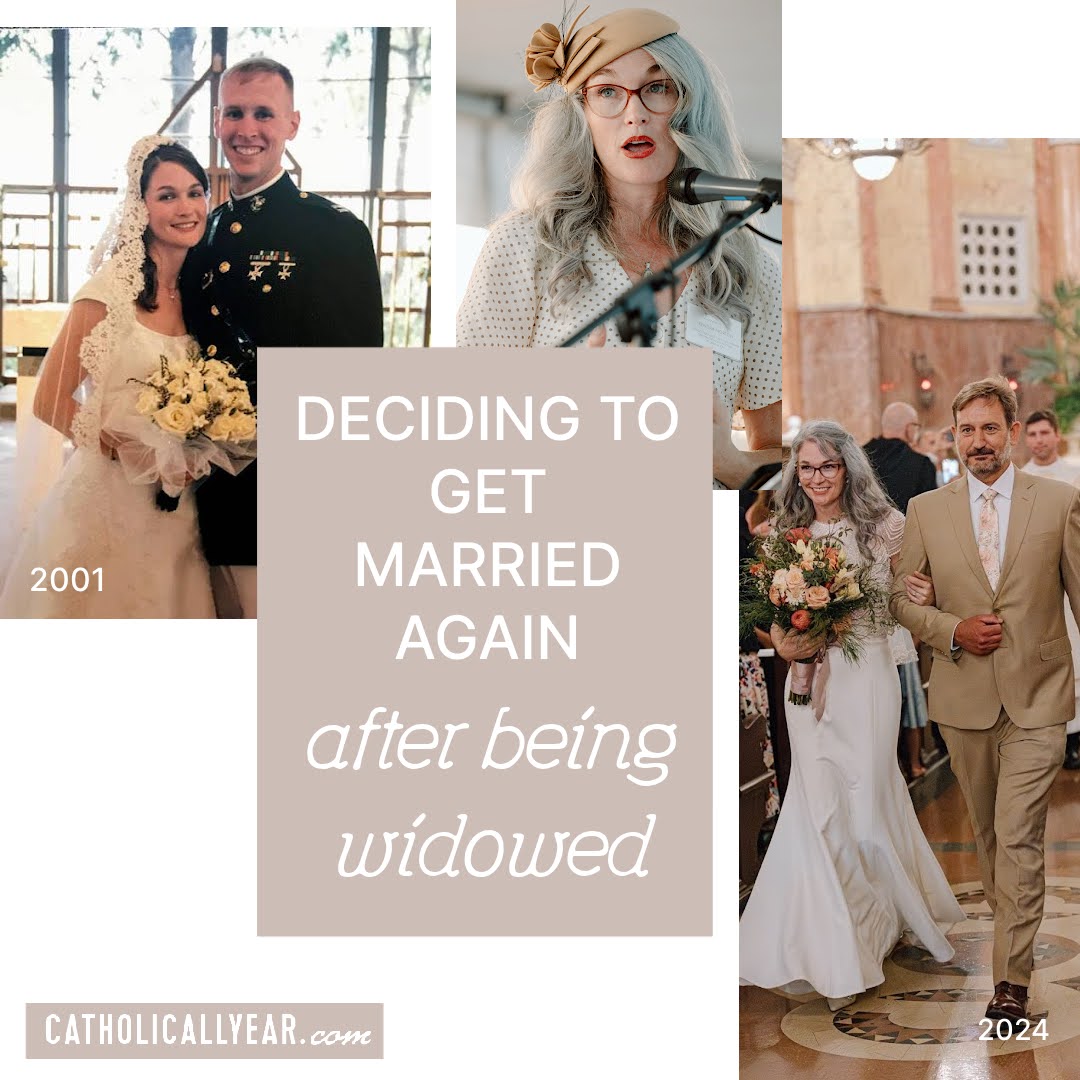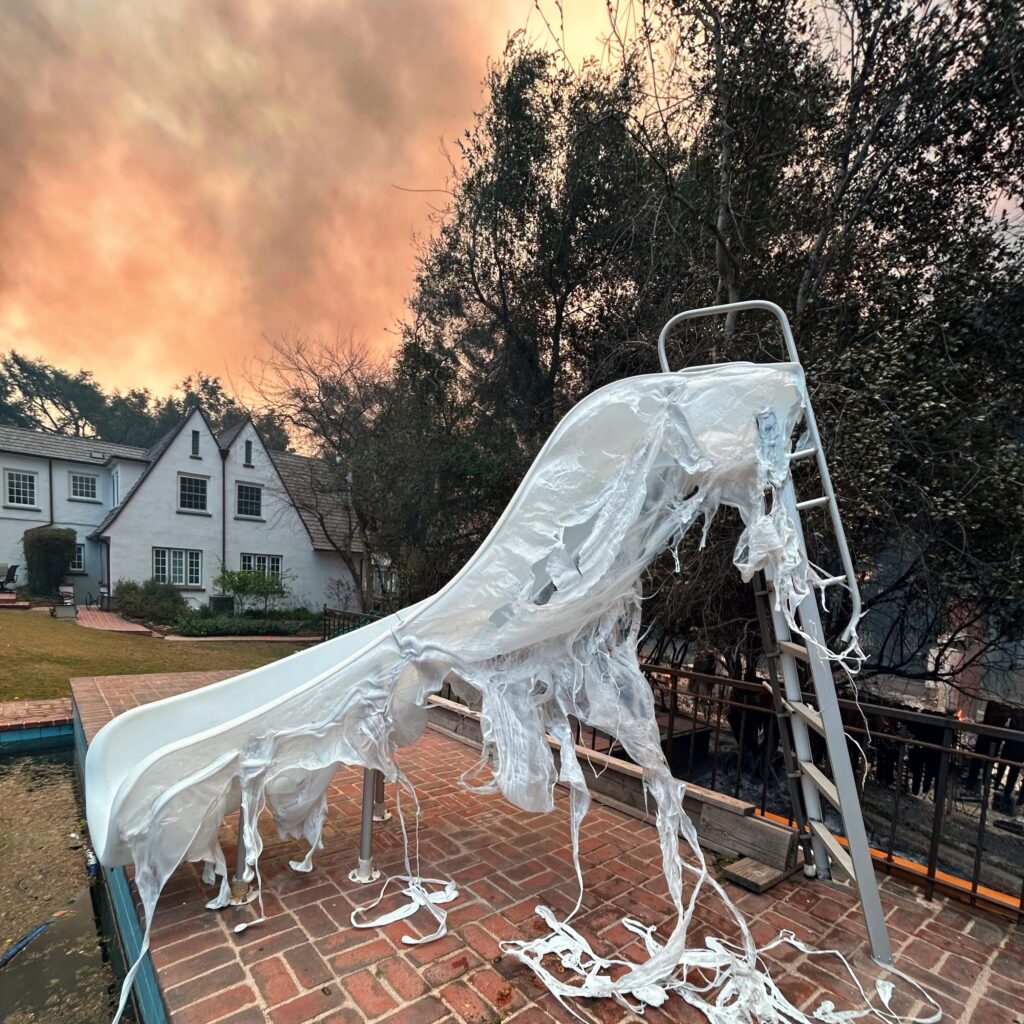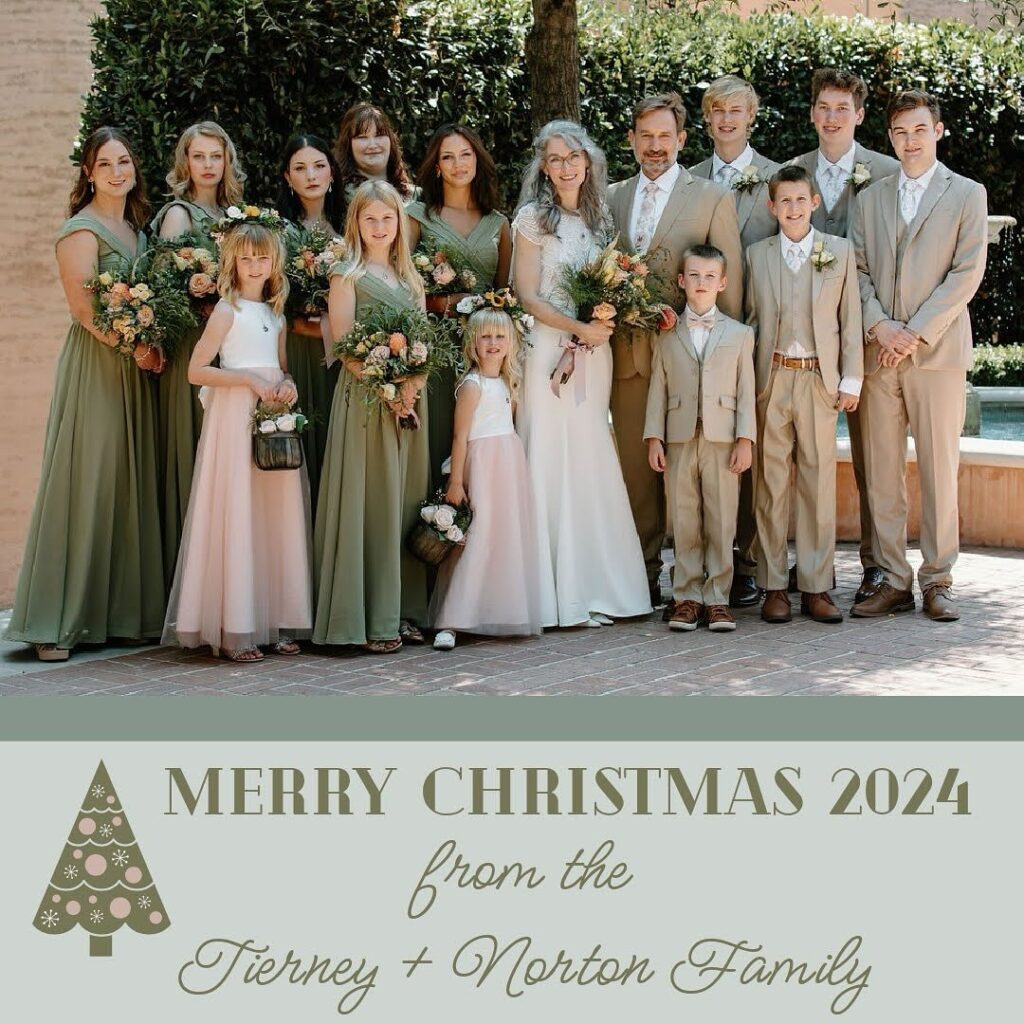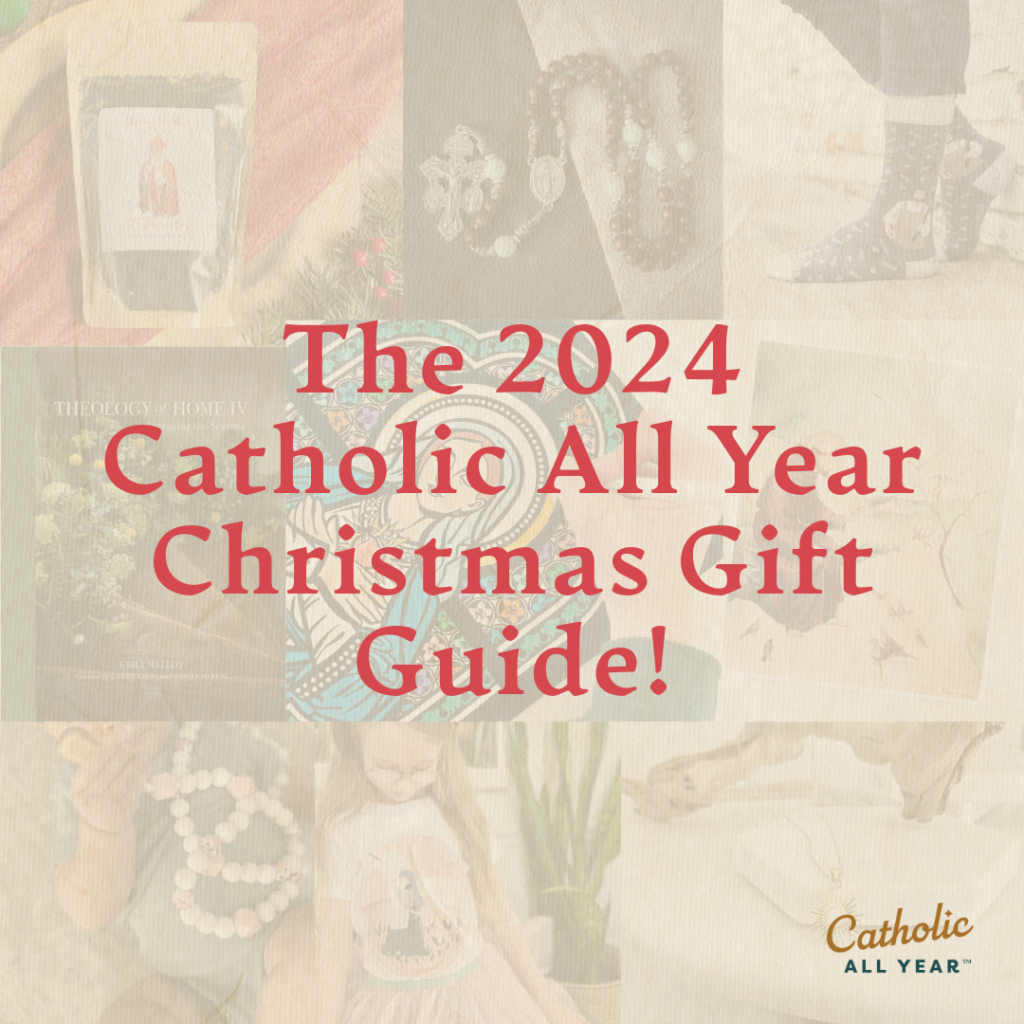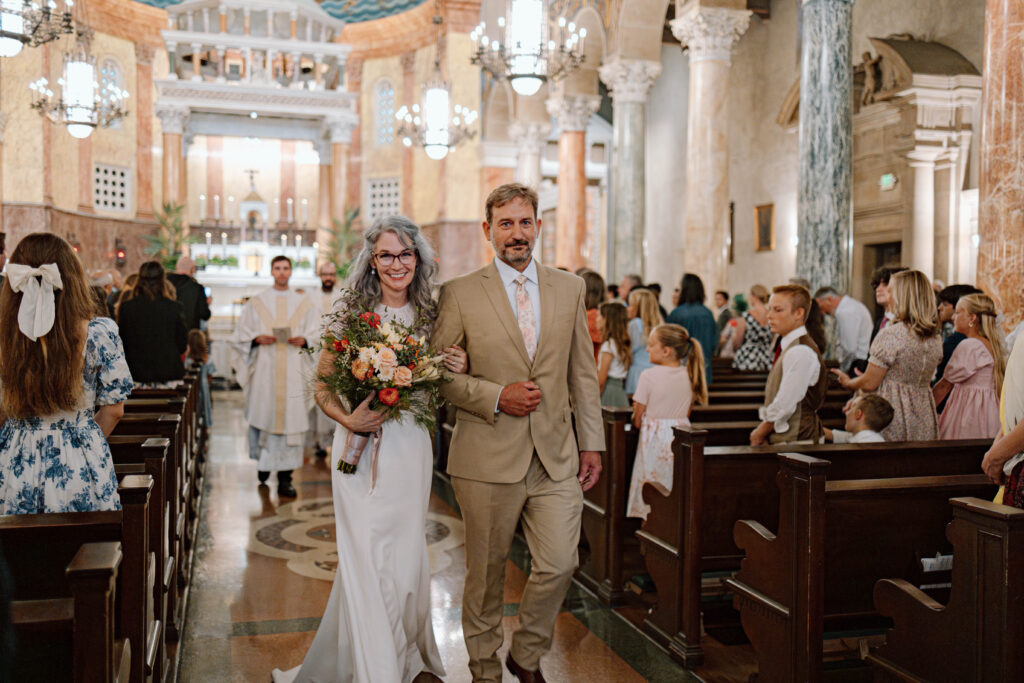
Here’s the text of the talk!
Okay, Fiat 2024, you guys. Thank you so much for being here for the conference today. It’s been my great pleasure to host this event at my home for the last ten years. (This is the ninth one, but we had to skip one year. I can’t remember why . . . ) I love the talks. I love the sacraments. I love the artisan fair. I love the food. I love that it makes internet friends into IRL friends. I really love that it gives me a deadline for getting home improvement projects finished and a reason to get the house and yard and various random outbuildings cleaned up.
My kids will tell you how much I love this. Are any of my kids around? Let’s ask them. Did I prep you for this question? What’s my favorite week of the year? That’s right: dumpster week. All last week there was a giant red 40-yard dumpster in our driveway. Like, the big construction one. It’s crazy how things accumulate, right? Especially in trying times. When you’re in survival mode, cleaning out the garage is probably not going to happen.
But this year, my life, while not . . . uncomplicated, is feeling stable for the first time in a long time. So we got the BIG dumpster. And John and I et al. filled that baby up together.
I’ll bet you guys want to talk about that. And we will, we will, but in the context of some bigger concepts too.
I know some of you have been following our family saga for over . . . twelve years now. And praying for us for a lot of that time. So, I think you’ve earned the right to feel a little nosy. I’ll allow it.
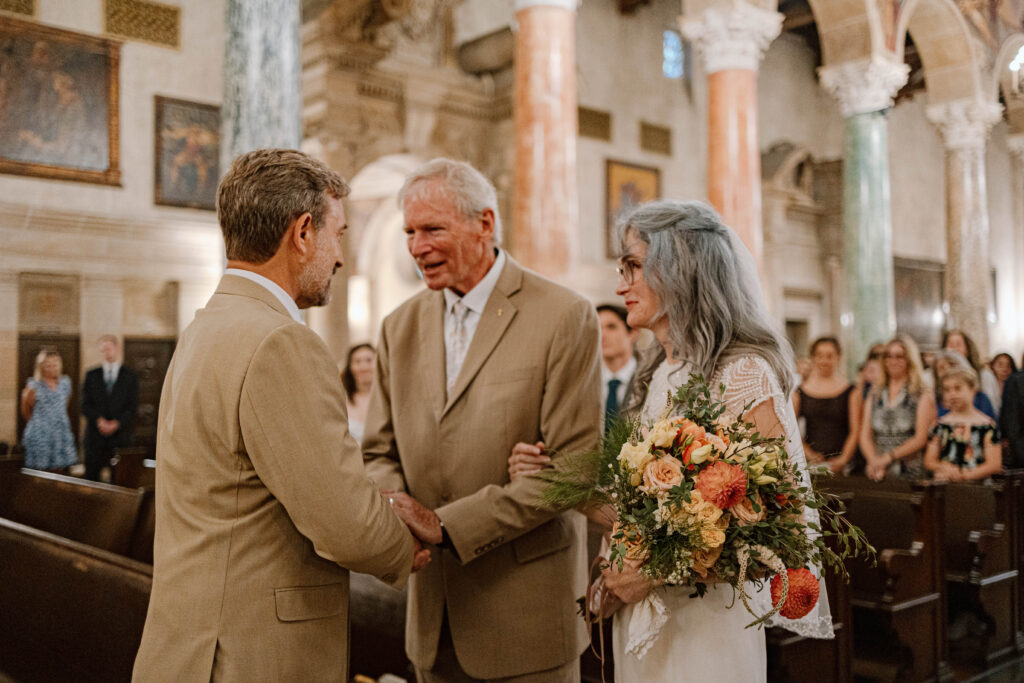
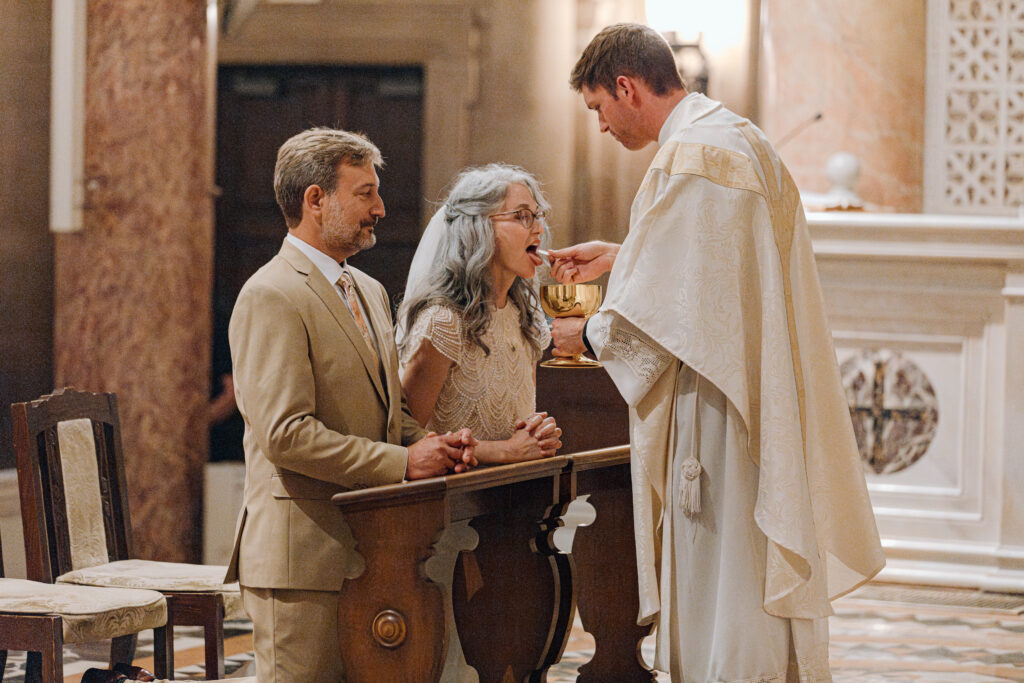
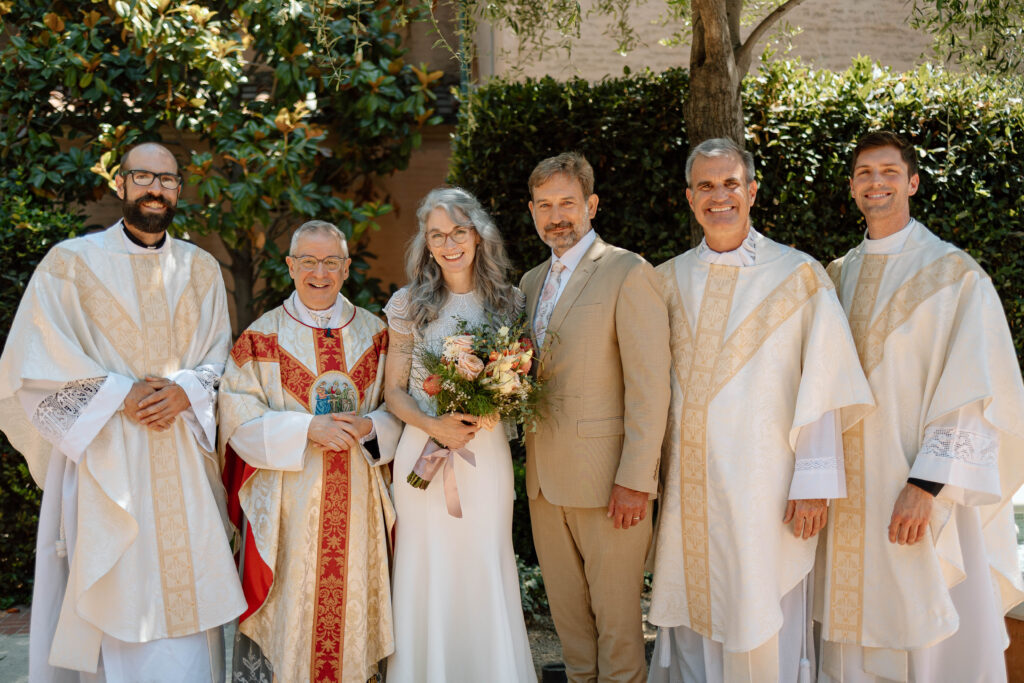
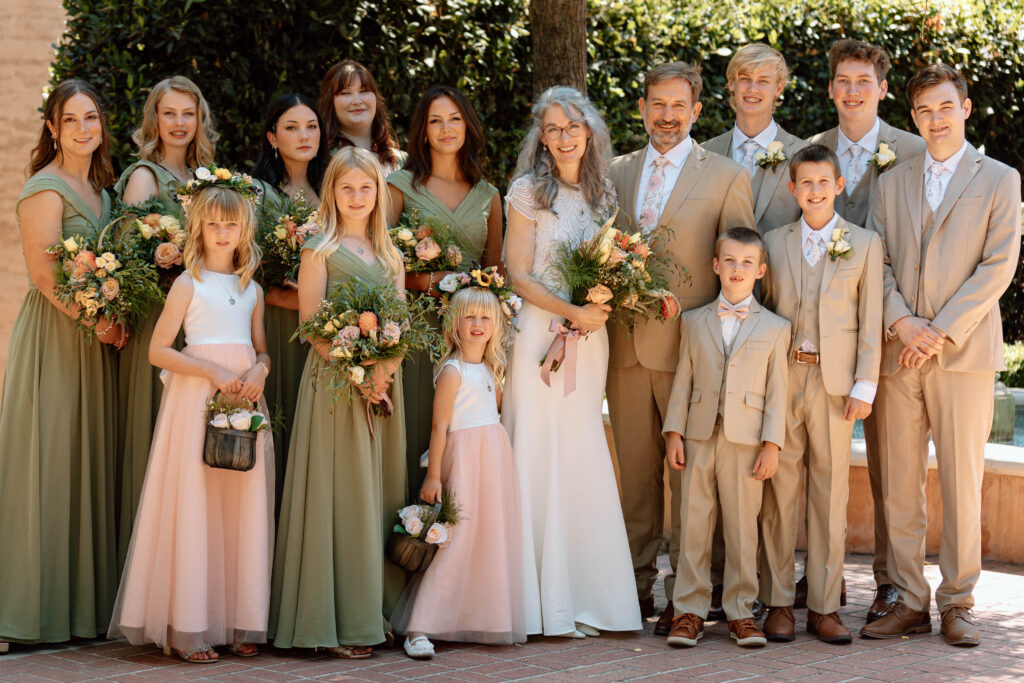
So, yes, I am married. To John Norton. Tomorrow will be three months that we’ve been married and eight months that we’ve been together. We’re going to talk about that today. About how it happened at all. I had a running joke with my friends over the past few years about how I was “unmarriageable.” But, as it turns out, all things are possible with God. Shocking, right? I’m going to talk about how I determined that I still had a vocation to marriage, or, rather, that I had ANOTHER vocation to marriage, and how I used prayer and the sacraments, a radical trust in divine providence, and a not-all-that-well-known devotion called holy enslavement to discern that marriage to John was God’s will for us and our children. That’s right, holy enslavement. You’re intrigued. And troubled. I know. Stay with me.
But FIRST, for those of you who might be new around here, we’ll start with a little recap of how we got here, and we’ll do a quick review of my talks here the two previous years, because this has turned into a trilogy of sorts.
The hinge, as it were, of all of this is that in the summer of 2022, at the age of 46, I became a widow and the single mother of ten children.
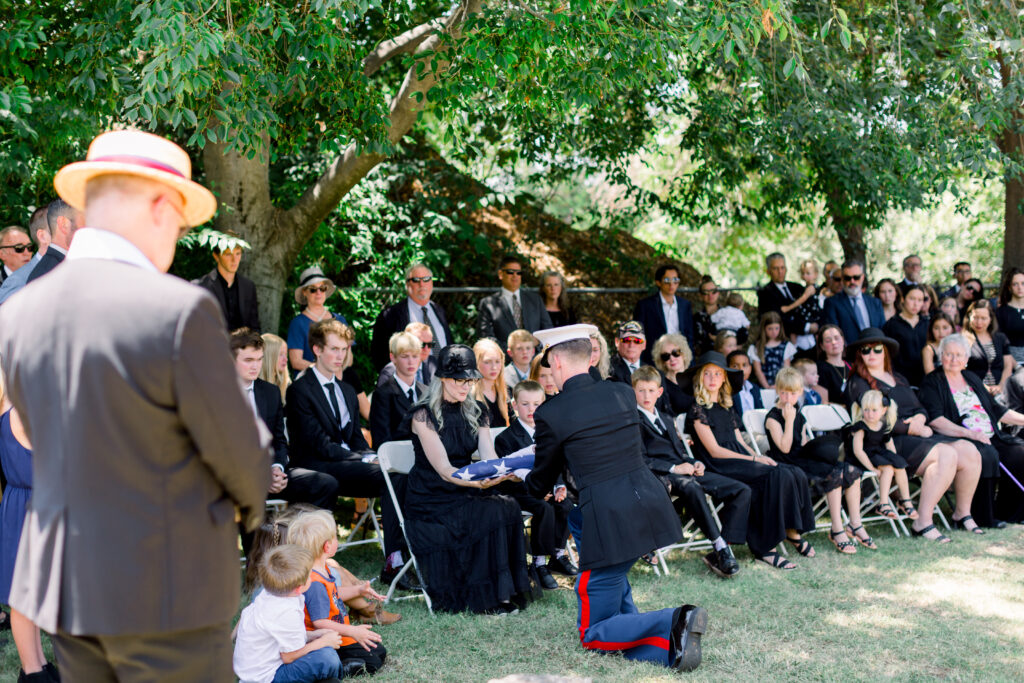
But let’s start a bit further back. I met my late husband Jim at an informational meeting for young adult volunteers for my high school youth group. I was 23. He was 26. We got married a little less than a year after meeting, and when we went out to dinner for our first anniversary, we brought a baby with us. In February of 2007, six and a half years after we were married, Jim was diagnosed with metastatic melanoma. I found out I was expecting baby number four two days later. Jim had medications and surgeries and radiation treatments. Baby Gus was born in November. The three of us visited the shrine of Our Lady of Lourdes in France that spring. After his course of treatments and our pilgrimage, Jim spent ten years in remission. We had five more children in those ten years. We were happy. Jim had a job he cared about. I homeschooled and started Catholic All Year. We bought our fixer-upper dream house and settled into life in a community we loved.
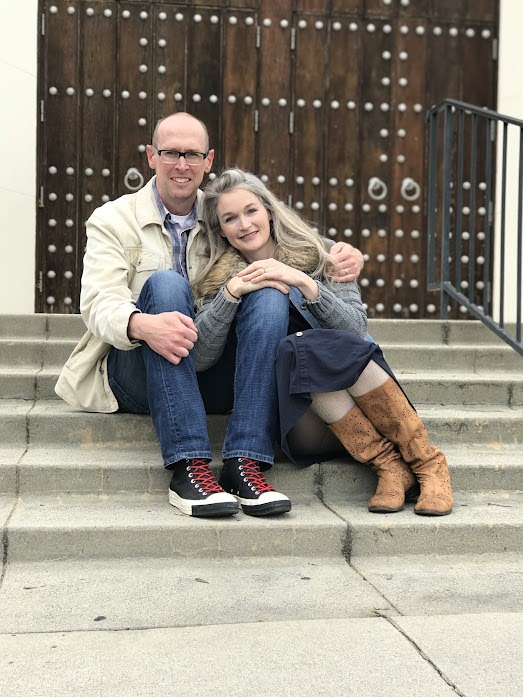
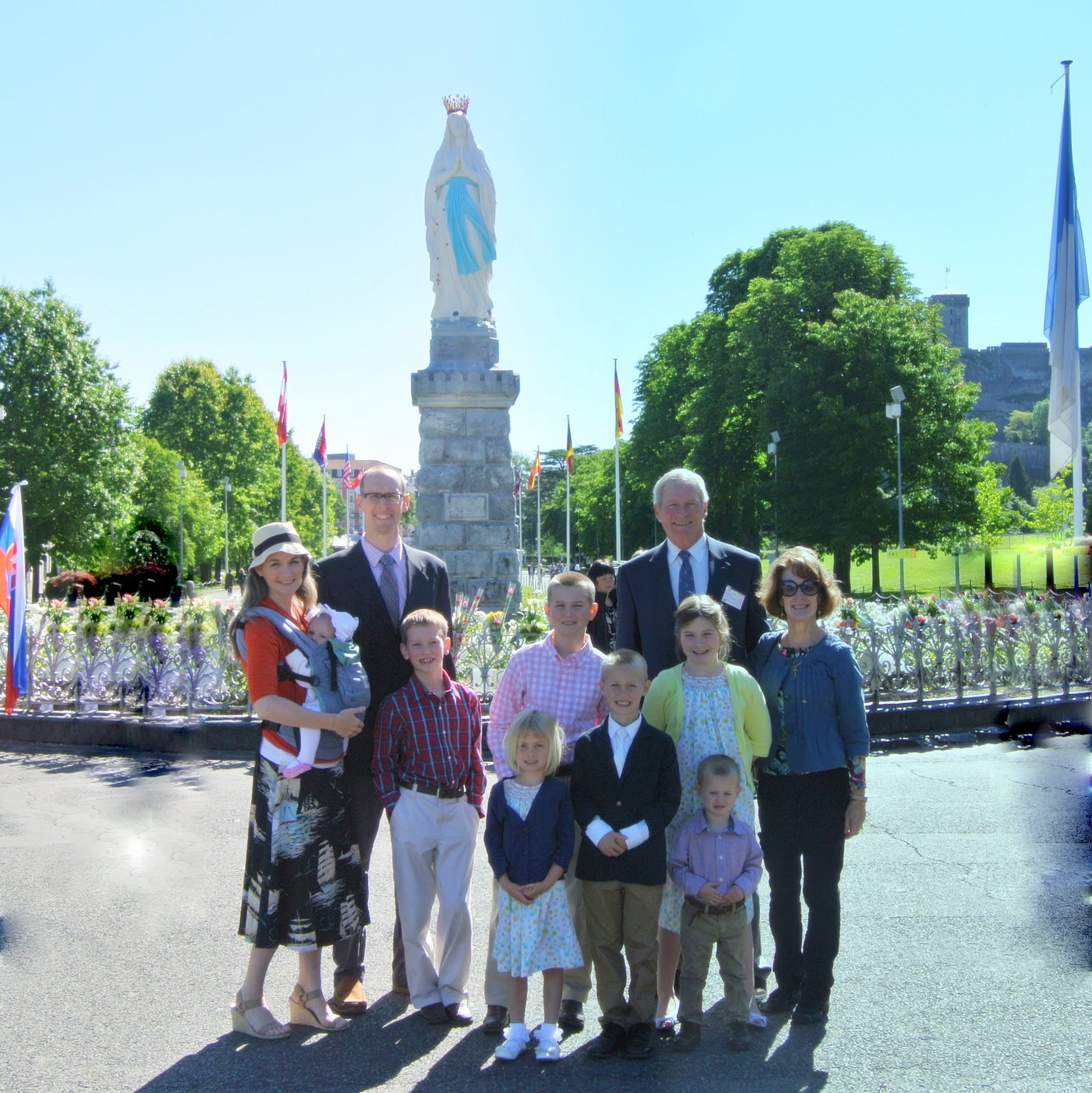
In 2018, during a routine follow up scan, it was discovered that Jim’s cancer was back, or—more likely—had never really been gone.
He started a new treatment plan. The melanoma tumors spread to his lungs and, eventually, his brain. Our youngest daughter, Barbara, was born in 2019. When she was two months old, Jim started having occasional grand mal seizures. Over the next two and a half years, Jim continued to be—as he always had been—a conscientious professional, a dedicated father, a devoted husband, a good friend, and a man of great personal faith.
He died at our home on July 9, 2022 at the age of 49, surrounded by family and friends, having received last rites and viaticum. It was the kind of “happy death” that Catholics pray to Saint Joseph that they might get to have.
My children and I had the consolation of strong support from our family and our community, material stability, and—most importantly—each other.
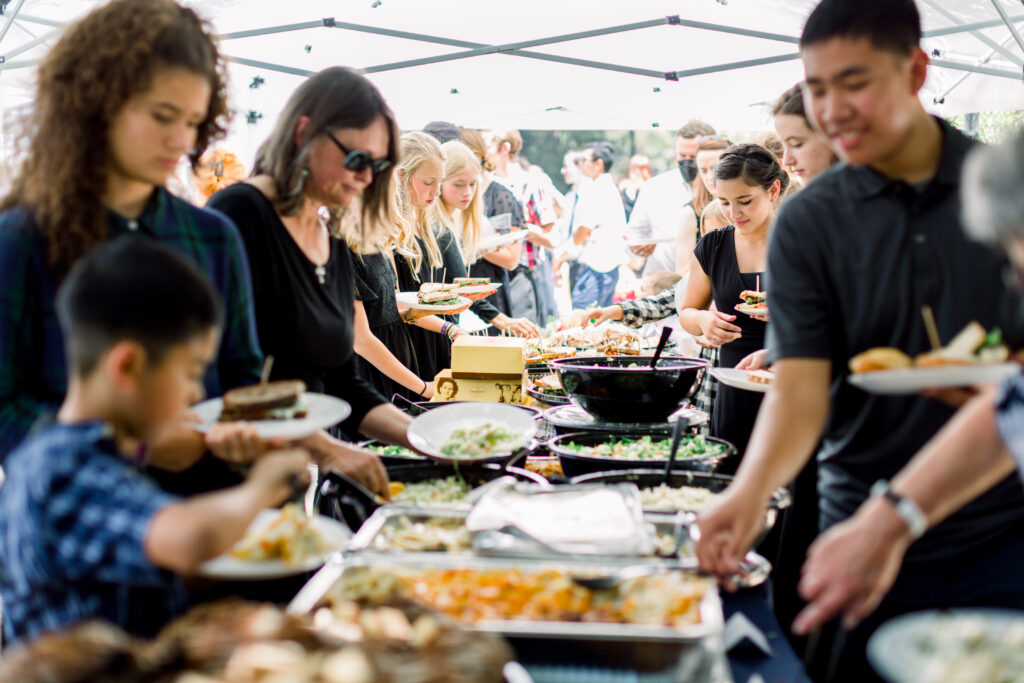
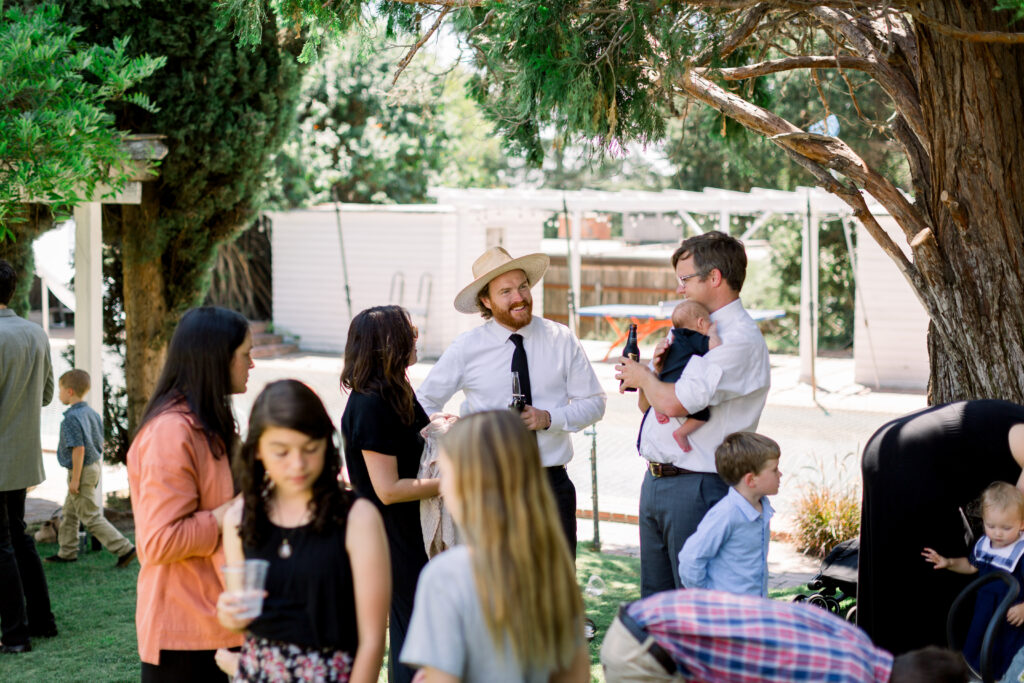
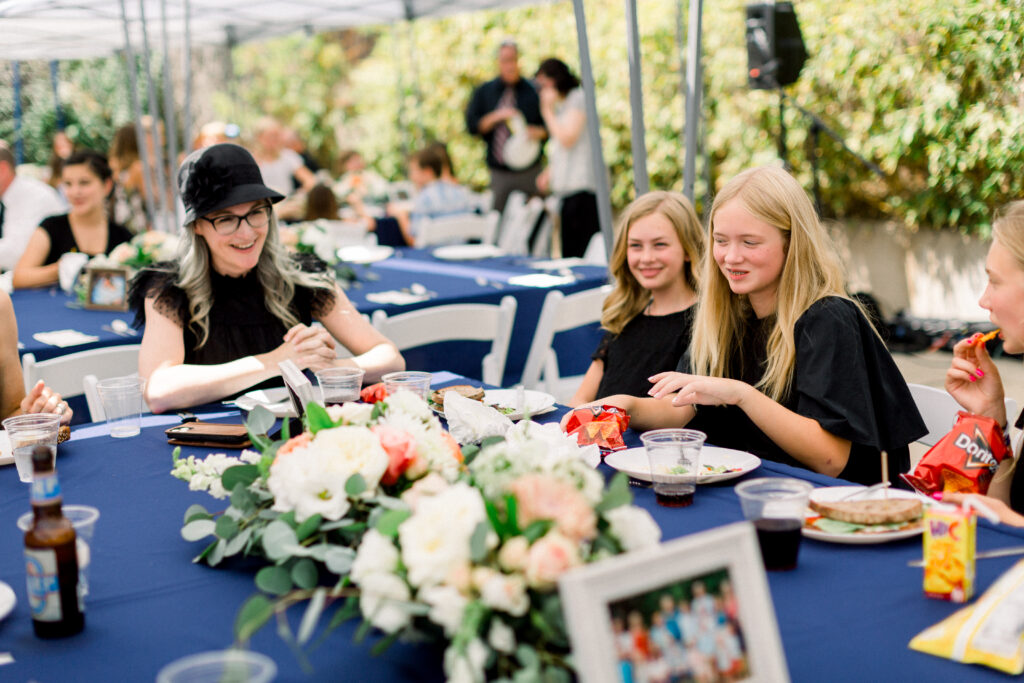
But I had to admit that my life was all of a sudden decidedly NOT what I would have wished it was; it wasn’t what I imagined it would be. My husband was a good man. Our marriage felt easy, despite the challenges we faced. And then it was gone. We thought we would grow old together, but instead I was a single mother. Losing a husband is more than losing a person. It’s also losing an imagined future, and having to face decisions and hardships and circumstances that my marriage would have shielded me from.
I was a person trying to figure out a new and different life. A life that did not look the way I expected it would. But, I knew that it WAS still an authentically Catholic life. It WAS still my faith that was the animating principle of my existence. I knew, I know, that while few people will have gone through exactly the same hardships I’ve faced, we ALL suffer, we all face times of crisis. And that means we all face that decision point: will this crisis bring me closer to God, or will it make me turn away from him? As I began to reflect on it, as I began to talk with friends who had also experienced hardship and sorrow, three aspects of that process kept coming to mind, of living through different stages of crisis, and learning to cope with ever changing realities.
I talked about two of those in my Fiat talk in 2022, in my “VSW” or “Very Sad Widow” talk. That talk was about what had helped me cope as I lived for sixteen years with the challenges and uncertainties of Jim’s illness. How I was inspired, 1. To wait to worry, to recognize that even though I had this thing looming over me, on THAT PARTICULAR DAY, I was okay, we were okay, and, 2. To rely on intercessory prayer in a deep way, especially when it was hard to pray for myself, to allow me to keep from falling into despair. Those two strategies worked very well for me as I navigated the world as a person facing potential tragedy. It was really important for me NOT to live life trying to anticipate all the bad things that might happen. After all, we aren’t given the graces to bear challenges we haven’t been given.
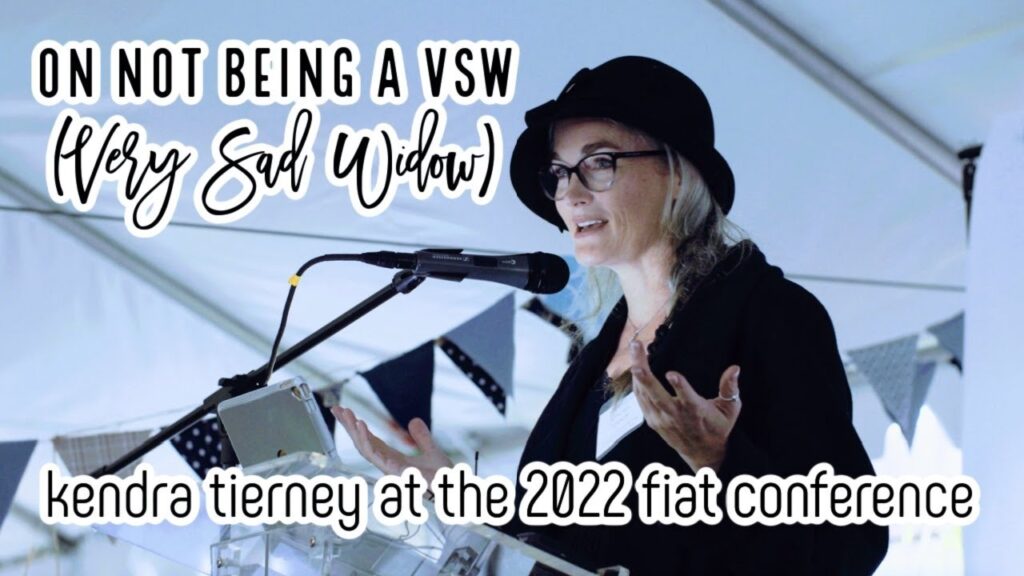
The third coping strategy is a deep reliance on prayer and the sacraments, which I spoke about in my talk last year, but I’d like to add a related topic this year. This year, I’d like to add the concept of radical acceptance of God’s will in one’s life.
As hard as it was at first to hear and recognize, losing my husband was God’s will for me. Throughout Jim’s illness, when people would ask how they could pray for me, I would ask them to pray that I would have “radical acceptance of God’s will for my life.” It was my prayer for sixteen years. Of course, the quiet part of that was that I hoped that the will of God that I would be radically accepting was aligned with what *I* wanted. Now, I do believe those prayers were effective. I believe that praying that way helped keep my heart open in a way that it might not have been otherwise. But even all those prayers didn’t stop me from rebelling if someone would attempt to comfort me by saying that Jim’s death was God’s will.
In fact, here’s an example of the perils of Catholic influencing by living people like myself: I did a series of videos for Ascension Presents about a year after Jim died, and in one of them I talk about just this concept. I say that there is death in the world and suffering, but that all that is just a side effect of the fall, that God hadn’t wanted us to suffer, that wasn’t the original plan. That God doesn’t WILL our suffering, but that he allows it, because of free will and whatnot. And all of that is somewhat true, and it was comforting to me at that time. So if you’re in the trenches, feel free to blame Adam and Eve if you want, but eventually, I came to see it differently.
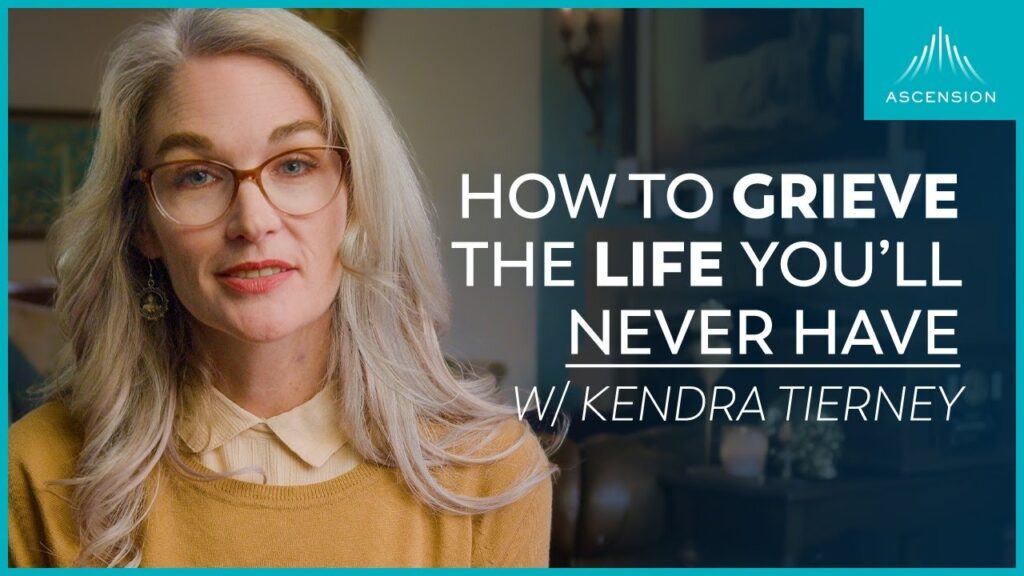
For Christmas last year our fabulous emcee and my Fiat partner in crime and best friend Micaela gave me a tiny book with an intriguing title. It’s called Trustful Surrender to Divine Providence: The Secret of Peace and Happiness. You guys, reading this book made me SO MAD. It did not, upon my first reading, seem like it could possibly live up to the claims of its name. Certainly not the subtitle anyway. The first time through, it did not make me feel peace and happiness. It mostly made me feel triggered.
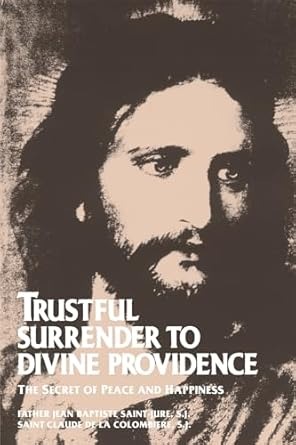
The authors are a sixteenth-century priest and a seventeenth-century saint and they make a compelling case based on Scripture that everything that happens in our lives, good or bad, is specifically willed by God for our own good, and will sanctify us if we will let it. In the case of the bad, we are to see every circumstance—from inclement weather to illness to persecution to crimes committed against us—as exactly what God wishes us to be experiencing in that moment. He does not will the sins committed by us or by others, but He does will the consequences of those actions in our lives in order that we would benefit from them in eternity.
It was, as Christians before me have grumbled, a “hard saying.”
But then I started thinking. My track coach at USC, did he will my suffering? He absolutely did will it. It wasn’t some accidental byproduct. He willed my suffering and he orchestrated it, and it was specifically to get the best I was capable of out of me.
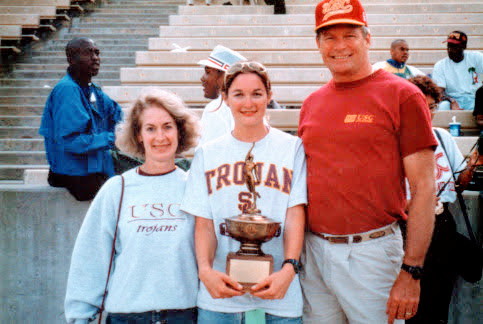
I came to see the idea that my suffering could be the active will of God as . . . certainly possible, and not unreasonable, and fitting to the perfections of God, and supported by Scripture. That vision of God that I thought I had wanted, of him holding me in his arms and weeping with me, because isn’t life so unfair, and darn that free will that caused the fall and introduced death and disease and decay into the world, and here was God just as powerless as I to stop it. That was what I thought I wanted, but with time, I came to see that it didn’t fit at all with what I actually believe about God.
I believe in a God of miracles. I believe in a God who intervenes in big human events and little private moments. I believe in a God who is all-powerful. I believe in a God who loves like a father and disciplines like a father. Am I to see myself as above Saint Paul who suffered imprisonments, and beatings, and MULTIPLE SHIPWRECKS? Am I above Jesus, who tells Peter to put away his sword and not try to prevent the suffering that is to come?
That was just the philosophical piece, though. Even if I could resign myself to this new way of seeing, how could it be anything other than a hopeless drudgery in practice?
But, as I began to try to experience the circumstances of not just the loss of my husband, but all the little events of my day as willed by God and for my own good, I was shocked at how . . . liberating it was. All of a sudden, everything felt different: the carefully sorted craft supplies that my four-year-old inexplicably decided to dump into one giant pile, the night on which three different children barfed all over three different rooms, a person who had misled and mistreated me, grief and loss, last minute changes to my careful plans—I could experience it all not as chaos and failure, but as what God wanted for me in that moment.
I think it might be the secret of peace and happiness, after all.
We have to remember that there must be a caveat attached to every prayer, spoken or unspoken, and that is, “Lord, if it is your will . . . dot dot dot.” Any time we ask God for something that we think we want we must remember that we only want it if God wants it. We must remember that God is not bound by our prayers. The goal of prayer isn’t to change God, the goal of prayer is to change US.
And for me, it really did. The challenges I faced as a widow and a single mother were the most difficult of my life. I really had NOWHERE to turn but to God. I threw myself into prayer. I had always meant to say a daily rosary. I had always recommended it. But it was widowhood and heartbreak that made me actually commit myself to it. I became a daily Mass-goer again, after years of that not being possible. I started making daily visits to the Blessed Sacrament, not to sit in quiet peaceful reflection, no. To tell God: I don’t like this. Fix it.
Don’t worry, you guys. The “meet cute” is coming. The romance is on its way. But first we’re going to talk about the final piece of the spiritual outlook that I believe prepared me to be open to God’s will and able to do my best to discern it when it came. Aaannnnndddd . . . you guys know I like the weird Catholic stuff, right? Well, get ready to get a little bit uncomfortable, because now we’re going to talk about holy enslavement.
The roots of this devotion in me were planted a long time ago, at the very beginning of our liturgical living in the home journey, and, in fact, THROUGH our family’s favorite liturgical living in the home tradition. And I’ll bet you guys wouldn’t be able to guess what it is. Of all the crazy practices we do throughout the year, including the devil piñata we hit with swords last weekend for Michaelmas, and eating spaghetti with our hands on the feast of Saint Joseph, and making boeuf gras sundaes out of all the treats in the house for Fat Tuesday . . . my kids will pretty consistently tell you that their favorite tradition of the year is the novena we do over the nine days before Christmas.
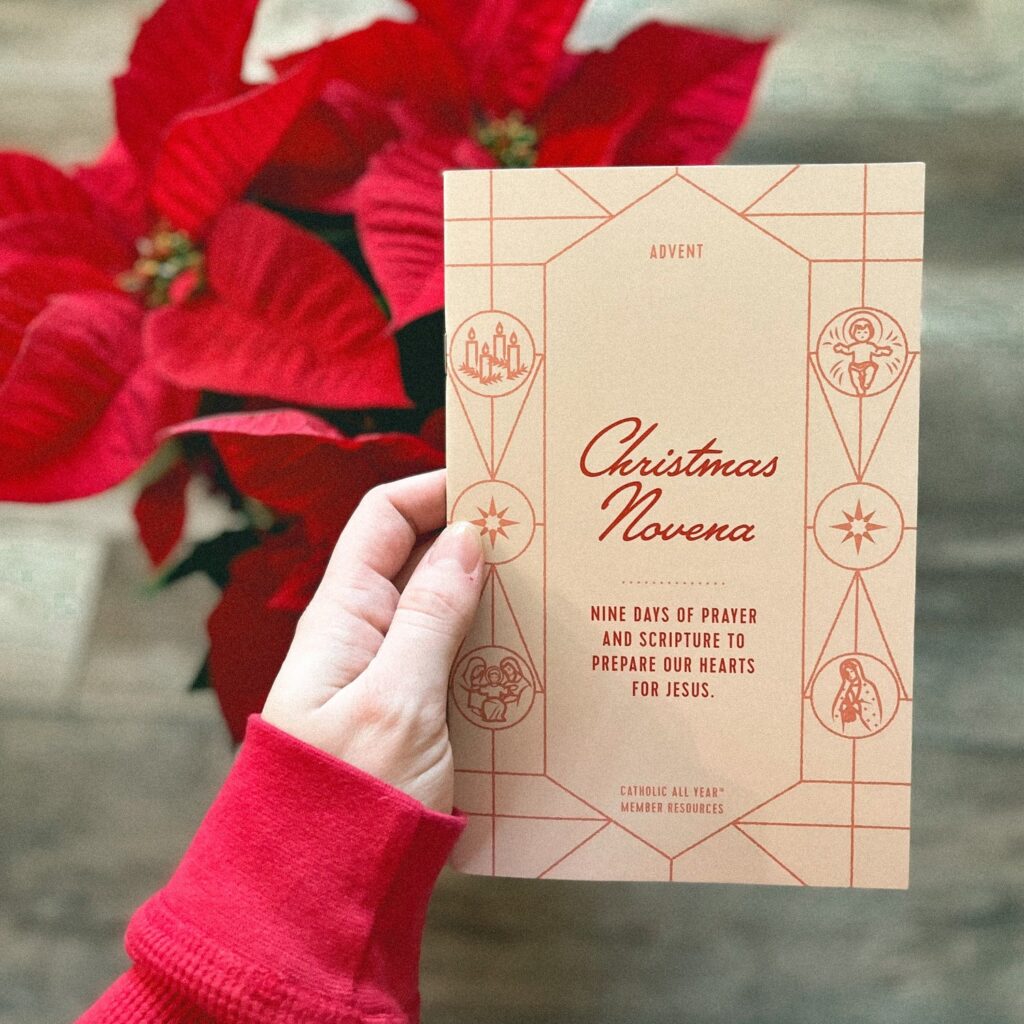
It uses prayers and call and response from the liturgy of the hours, plus readings from the Old and New Testament that trace salvation history and are fulfilled in one another. Except, it seemed, for the readings of December 19th.
Imagine, if you will, couches and various overflow seating filled with Tierney youngsters and invited friends and neighborhood guests and for MANY years, on that date, someone would be tasked with reading the following, from the book of Deuteronomy:
When you release a male from your service, as a free person, you shall not send him away empty-handed, but shall weigh him down with gifts from your flock and threshing floor and wine press; as the Lord, your God, has blessed you, so you shall give to him. For remember that you too were slaves in the land of Egypt, and the Lord, your God, redeemed you. That is why I am giving you this command today. But if he says to you, “I do not wish to leave you,” because he loves you and your household, since he is well off with you, you shall take an awl and put it through his ear into the door, and he shall be your slave forever. Your female slave, also, you shall treat in the same way.
Merry Christmas! Am I right? The kids would be like, “Mommy? What’s an awl?”
The novena was originally compiled by an Italian priest in 1721, but I found it around 2008 on a website that was sharing the content of a 1982 book that was in turn quoting from a 1955 book. Somewhere in that game of telephone one of the readings was misnumbered. As I was editing the Catholic All Year Prayer Companion and noting how well all the daily readings went together, all except THAT ONE, it occurred to me that, hey there might be a mistake, and I discovered that, while Deuteronomy 15:13-20 made everyone uncomfortable, Deuteronomy 18:15-22 contains the Old Testament quote that is referenced in the New Testament reading for the day, so I went ahead and switched to that.
But, obviously, that other reading stayed with me . . . and all of us, forever, I assume. Later, I came across the concept of voluntary slavery—or holy enslavement—again, in the writings of Saint Louis de Montfort. It wasn’t until I was living as a widow and a single mother that the devotion really made sense to me.
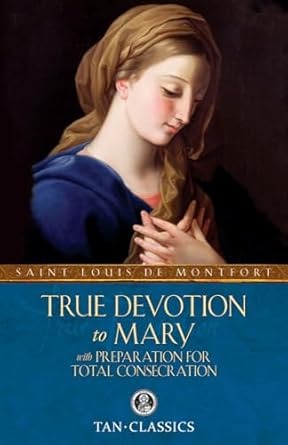
The slavery to which the Old Testament reading is referring is, obviously, different from the race-based chattel slavery of the Americas with which we are all unfortunately familiar. In other versions, it’s translated as “bondsman,” which is probably more accurate. It’s my understanding that these slaves in the ancient world would be sold to someone for a period of time, sold either by themselves or their families or as spoils of war. They would then regain their freedom at the end of the appointed time.
What would have induced a person who had earned her freedom to choose to get an awl through the ear and stay enslaved? It could only be that she had become part of the household, or even part of the family. That she was cared for and treated with respect, and that she trusted the judgment and leadership of her owner. That she would rather live under the authority, but also the protection, of a master. Thousands of years later, amidst the political and religious upheaval of seventeenth-century France, Saint Louis de Montfort asked his followers to acknowledge that they were slaves of the love of Jesus Christ through Mary, and even suggested that they wear small chains as an external sign of this condition. Of course, all those conditions of a perfect enslavement would be fulfilled by Our Lord and his mother, Mary.
As I mentioned earlier, as a widow, I was in an enviable position in many ways. I had the consolation of the happy death of my husband, I had the support of my community and extended family, I had financial security, I had (have) wonderful children with whom to weather the storm, but I also had SO MUCH responsibility. I was on the hook for all of it: the care of the children and our home, parenting and school and financial decisions, decisions in my personal life, and no one, really, who could even be a sounding board. And THAT, day to day was what I found the most difficult.
I kept thinking back to that bondswoman in Deuteronomy and how much I’d love to get a quick awl through the ear and be able to abdicate all this responsibility. Because that wasn’t going to be possible in the literal sense, I felt really drawn to the devotion of holy enslavement. I could, in prayer, say to God, “I don’t know what I’m doing, and you know that. So I give myself to you as your slave. You make the decisions. This is all your responsibility now.” It was an extreme way to pray, I know. But it gave me great comfort at the time, and helped me to feel comfortable later when I faced big decisions.
I didn’t know what God’s plan was for me, but I couldn’t get it off my heart that I had a vocation to marriage. I knew that wasn’t the case for all widows, that in theory I might have a vocation to single life, or religious life, but I felt that I still had a vocation to marriage. If I was right, that meant that it was through marriage that I was supposed to continue to grow in personal holiness and try to gain heaven. But, you know, the middle-aged widows with ten children aren’t exactly flying off the shelves you guys. It felt . . . unlikely. All I could find to say to God was, “God, I am yours. I want what you want, and only what you want. I have this desire to be married, and *I* can’t make this happen. So, either YOU make it happen, or take the desire away.” That was my pretty constant prayer for a year.
Then some mutual friends, all of whom are under this tent right now, introduced me to a handsome Catholic man named John, with four almost all grown kids. They conspired to introduce us at a hastily thrown together Halloween party. Those of you who used to read my blog might remember that I threw my own fake Halloween party when I wanted to get to know Jim. So, I don’t know who needs to hear this, but it is October: fake Halloween party you guys. Maybe try it.
Anyway, I met John and he absolutely WAS overwhelmed by the idea of a widow with ten kids the youngest of whom was four and who not infrequently gets recognized by friendly strangers in public places. He did not call me.
Okay. Let’s back up a minute to my little throwaway mention before, in the trustful surrender to divine providence part, of three different kids barfing all over three different rooms. That happened in the middle of the night and required a lot of cleaning up, obviously, and the driving home of a couple of Micaela’s kids who had been sleeping over, because, yeah, they didn’t want to stay in Barf-town, USA. But she’s the one who gave me the book, remember? And I was, by this time, committed to the concept. Her daughter even mentioned to her how weirdly unfazed I seemed in the moment, how I was just rolling with it. And that’s how it felt to me too.
I decided I’d better get up and go to the early Sunday Mass the next morning, because who knew when the next wave of barfing was going to occur. So I was at Sunday Mass alone, which never happens. And John was there, even though he usually goes to the later Mass as well. I didn’t see him, but he saw me, and God put it on his heart to call me and see where things might go.
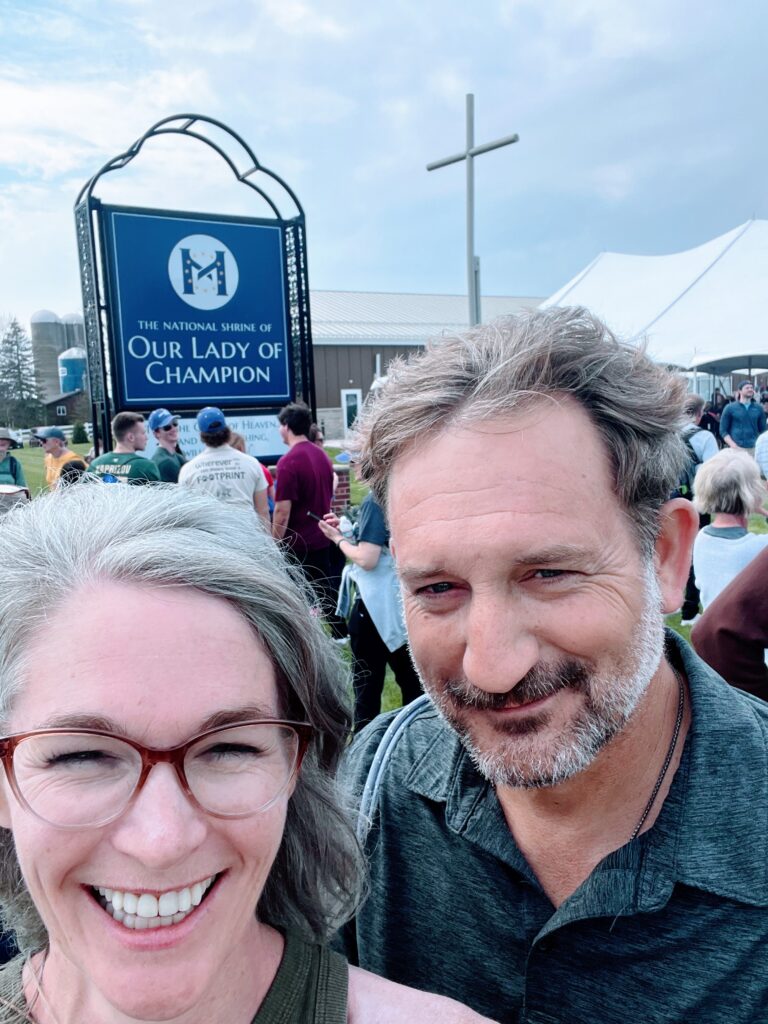
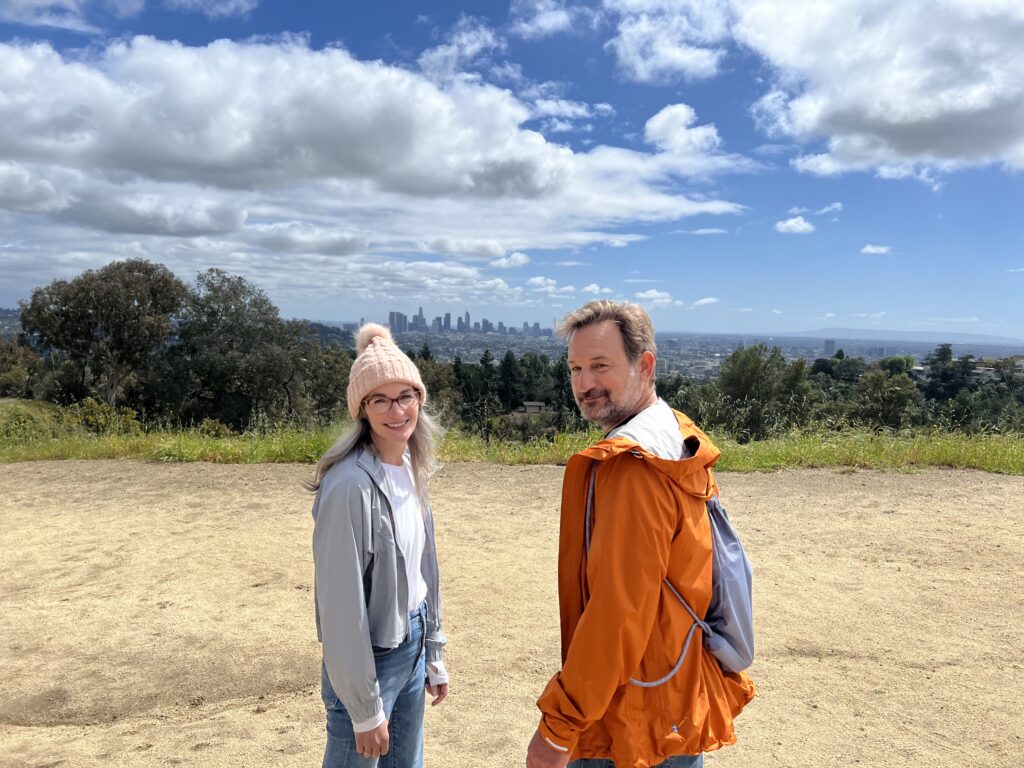
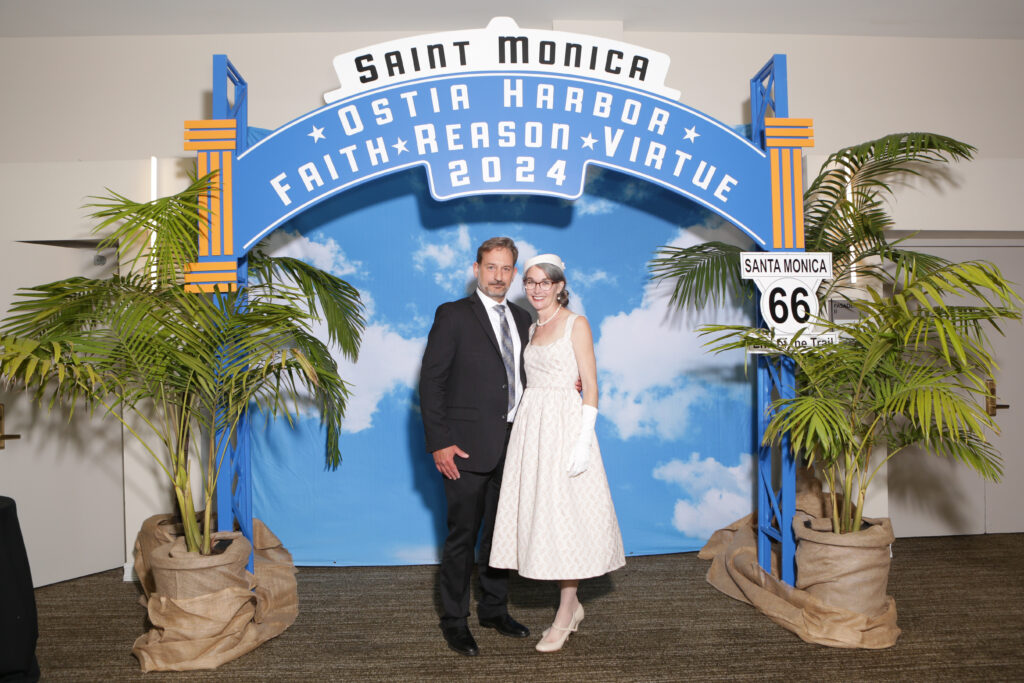
So three months after the fake Halloween party, he asked me out. We really enjoyed each other’s company right from the get-go, but we both had some preconceived notions to get past. We both had questions to ask each other, and to ask God. We started hanging out right as Lent was beginning, and my kids and I don’t use screens for entertainment during Lent, so he’d come by and we’d all be sitting by the fire, playing cards or reading aloud, and we might have allowed him to think that that calm idyl was our usual MO.
Our first meet up was Saturday morning Mass and then coffee. Our second was Saturday morning Mass then a hike, and a lot of hard questions and good answers. Our third was a visit to the LA Cathedral to venerate their tiny piece of the tilma of our Lady of Guadalupe. Then our parish Lenten mission started and he offered to pick me up each evening so we could go together. On one of the drives home, he mentioned that he had told his daughters that we were dating, and I was like, “ARE we dating? Or do we just go to church a lot?” And he took the hint and took me out to dinner.
But, of course, going to church a lot is the best possible start to a relationship. He had faced hardship and heartbreak of a different kind, but both of us had thrown ourselves into prayer and the sacraments. Both of us had read Trustful Surrender to Divine Providence. I think I was kind of on my own on the voluntary slavery thing, but it’s probably best if both parties don’t enter into a relationship with the goal of relinquishing responsibility. Both of us had discerned that we had a vocation to marriage, and it pretty quickly felt like God had had a hand in our friends’ schemes to introduce us. We felt strongly that, however complicated this all might seem in the short term, in the long term, it could only work for good for us and all the people we love.
John is a cool guy and he drives a red Jeep Wrangler, stick shift and everything. During covid, jeep people started giving each other little attaboys in the form of what they called “ducking” other jeeps. This meant leaving a rubber duck on or in a fellow jeep-driver’s car. John had received a duck, which he kept on his dashboard. My kids saw it and decided that his little duck looked lonely, so they grabbed a duck from their bathtub collection and snuck it onto his dashboard. So now he had a John duck and a Kendra duck. For the record the John duck is a duck duck. The Kendra duck is lavender, one-eyed, and has, like, cow horns.
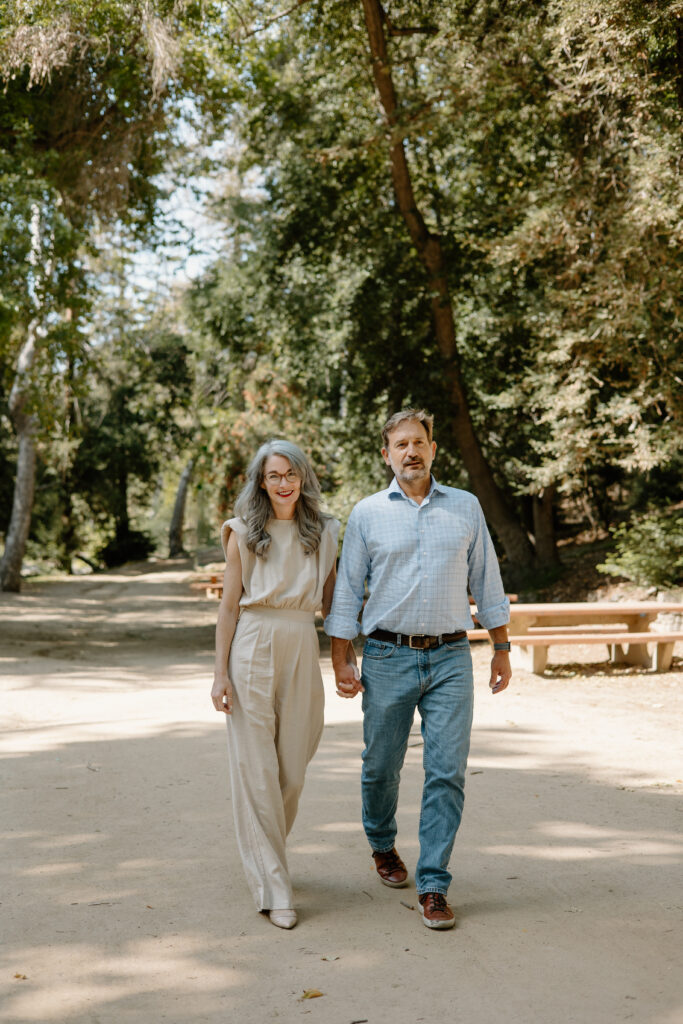
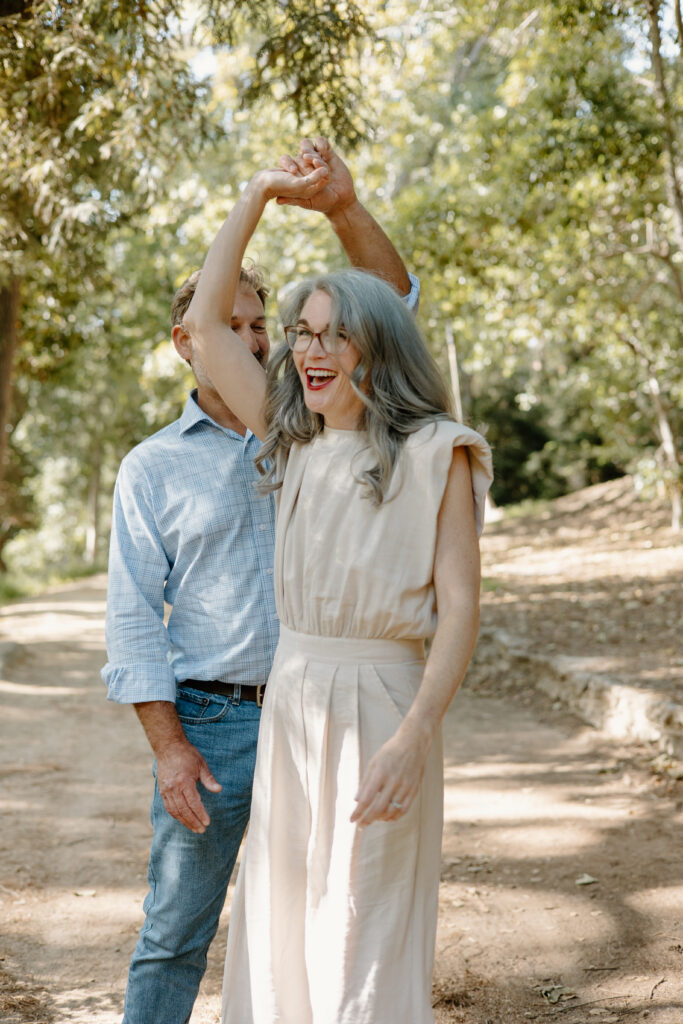
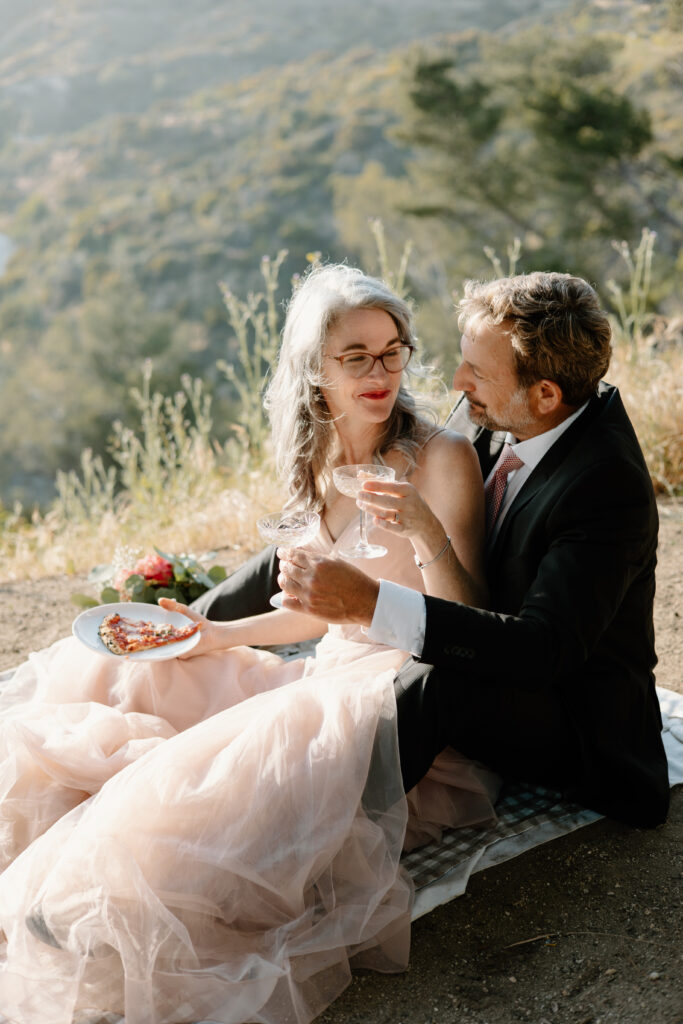
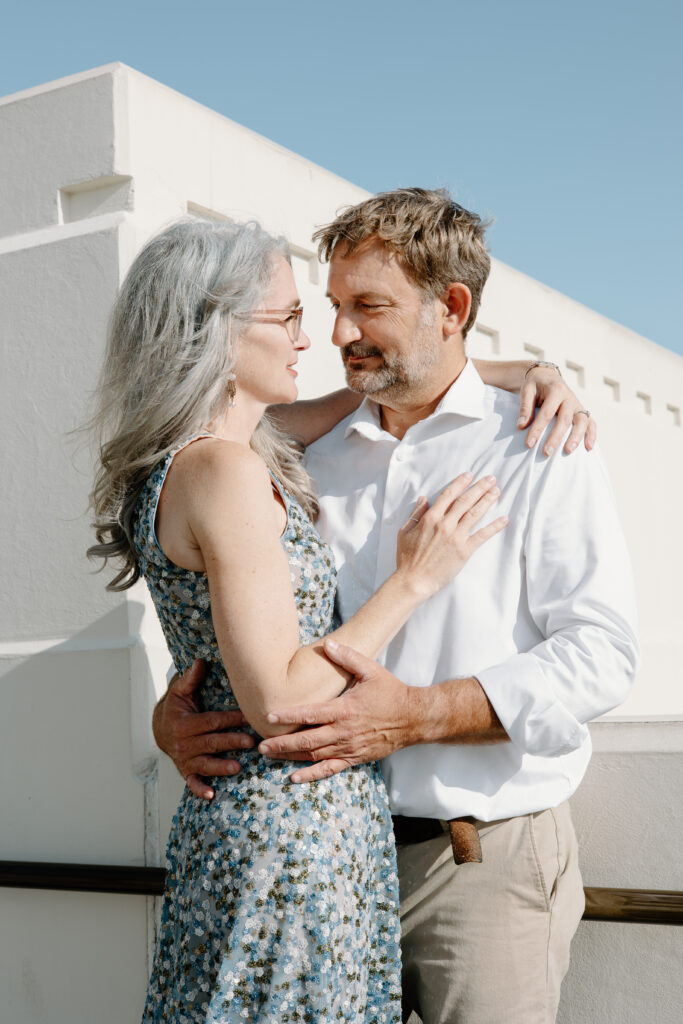
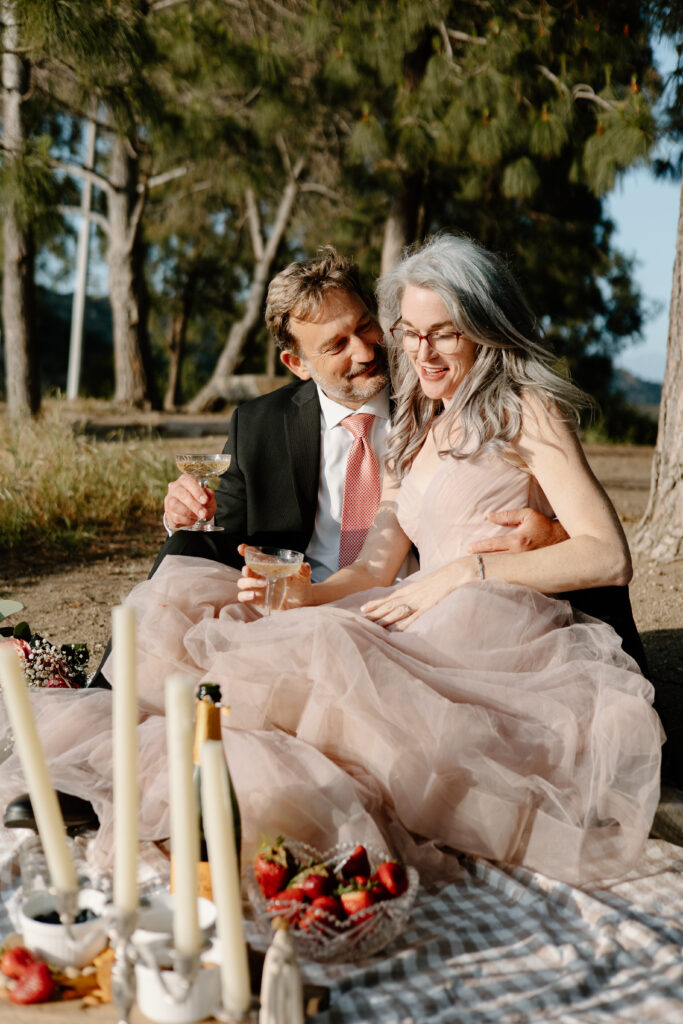
One evening, John came to pick me up for a date, to a restaurant, not to church. We went out to the car and there was the John duck and the Kendra “duck” sitting on the passenger seat, and they were surrounded by fourteen little baby rubber ducks, and in the middle of it all was an engagement ring. It was pretty cute. I said yes.
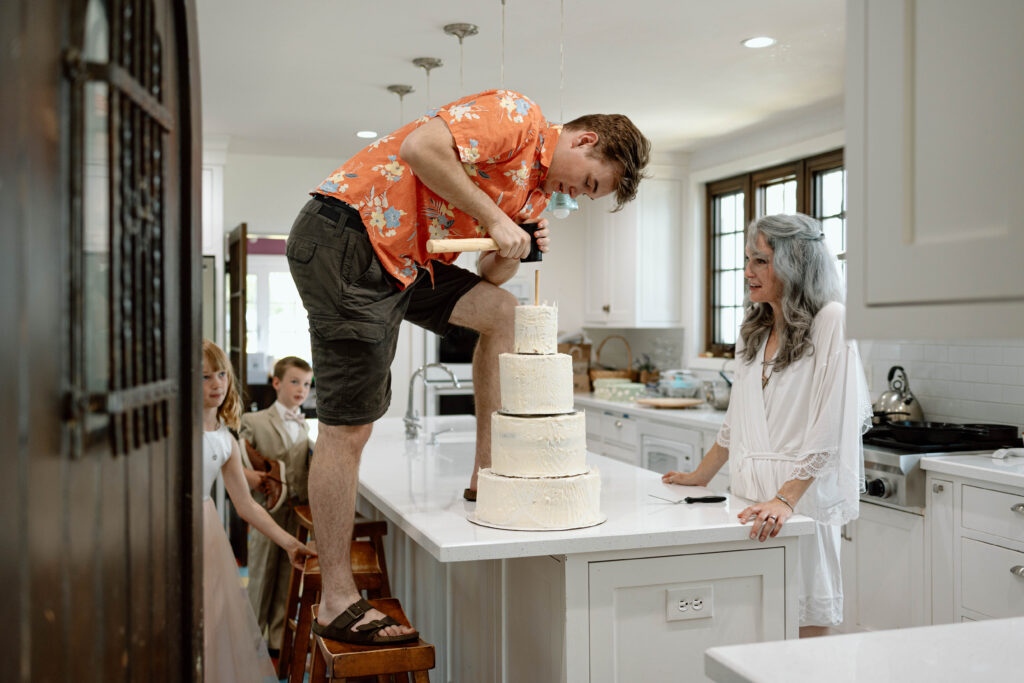
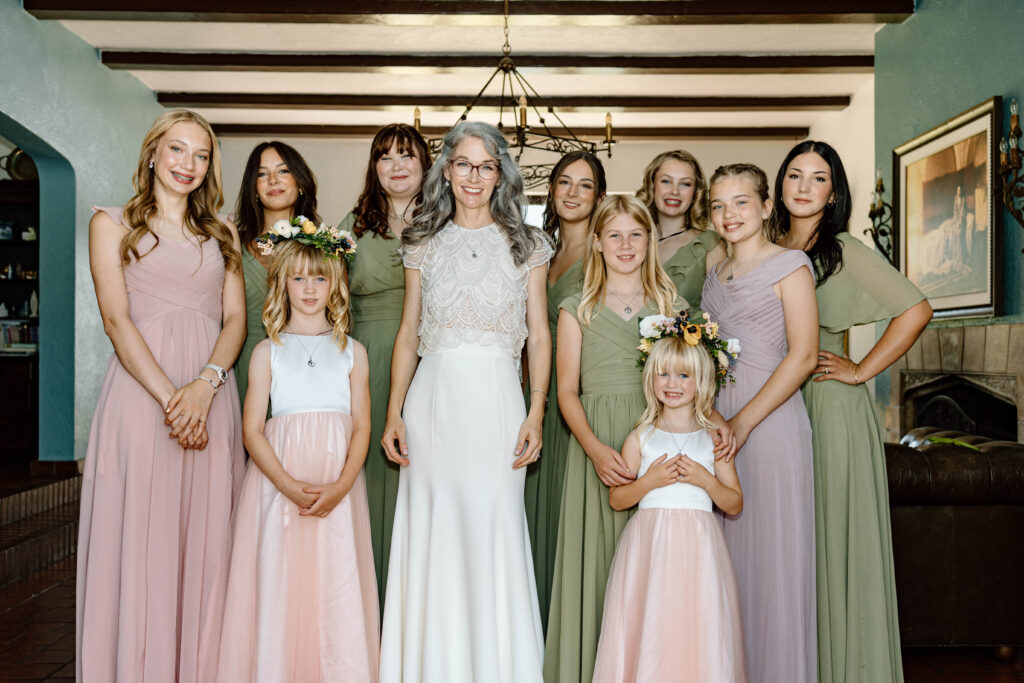
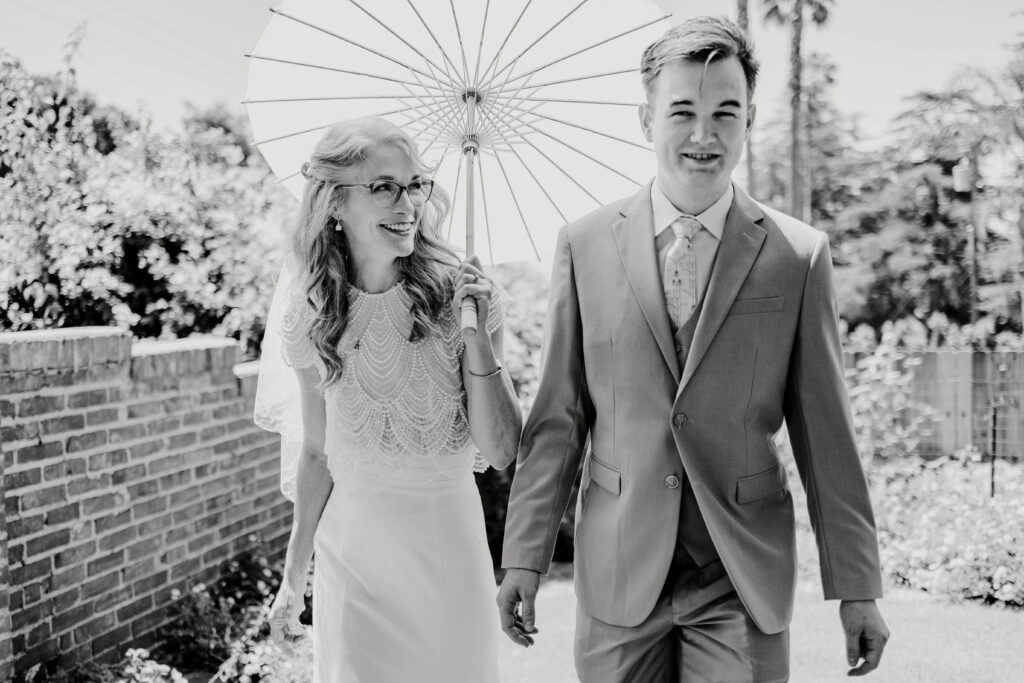
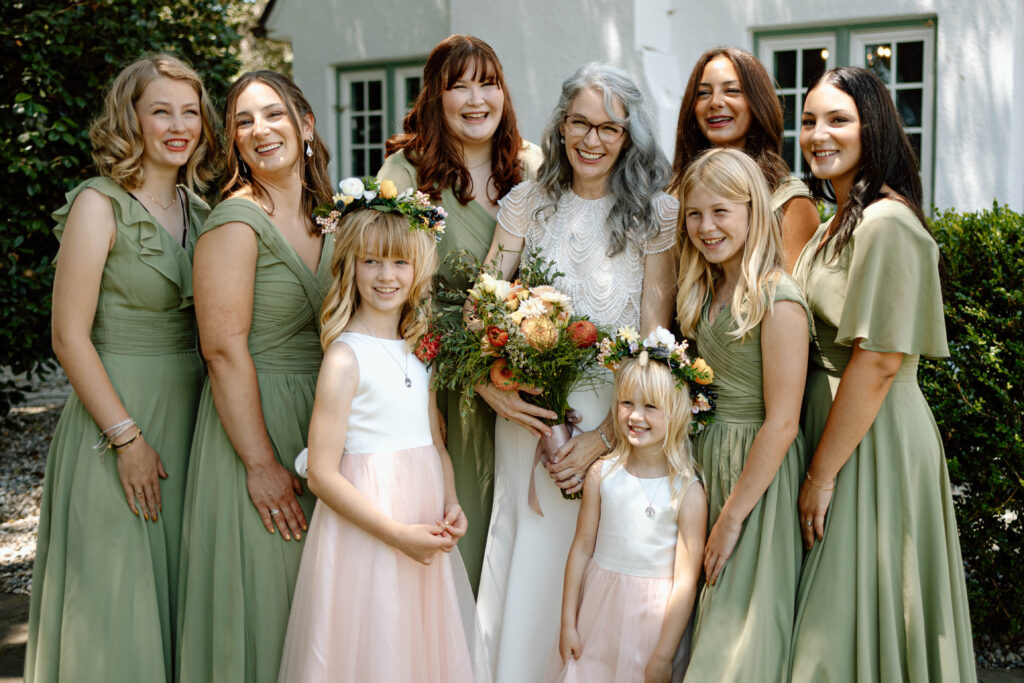
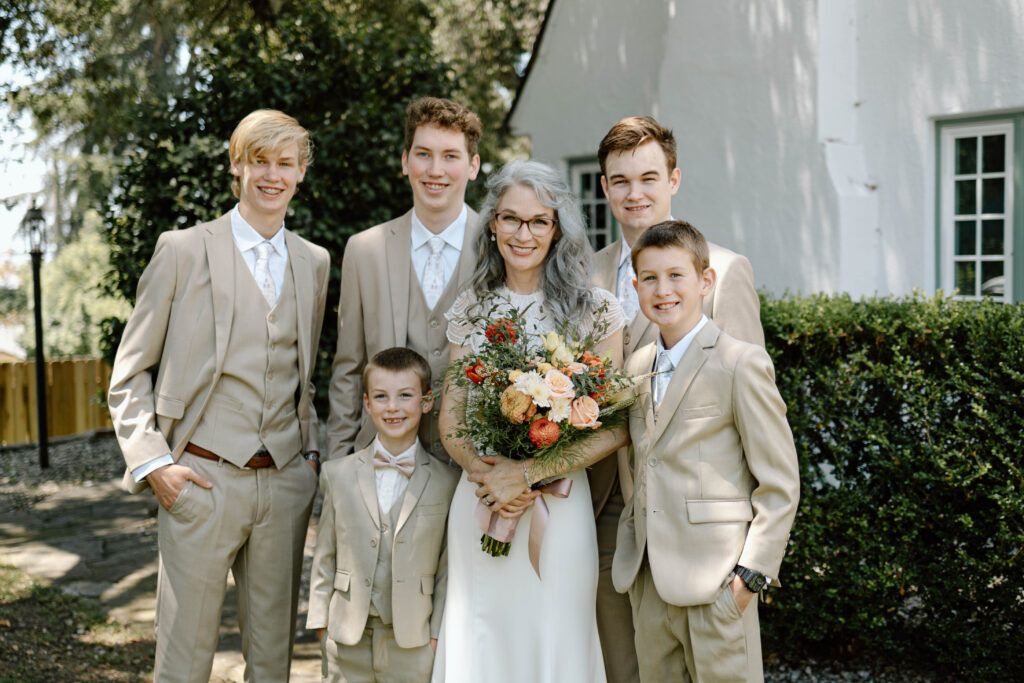
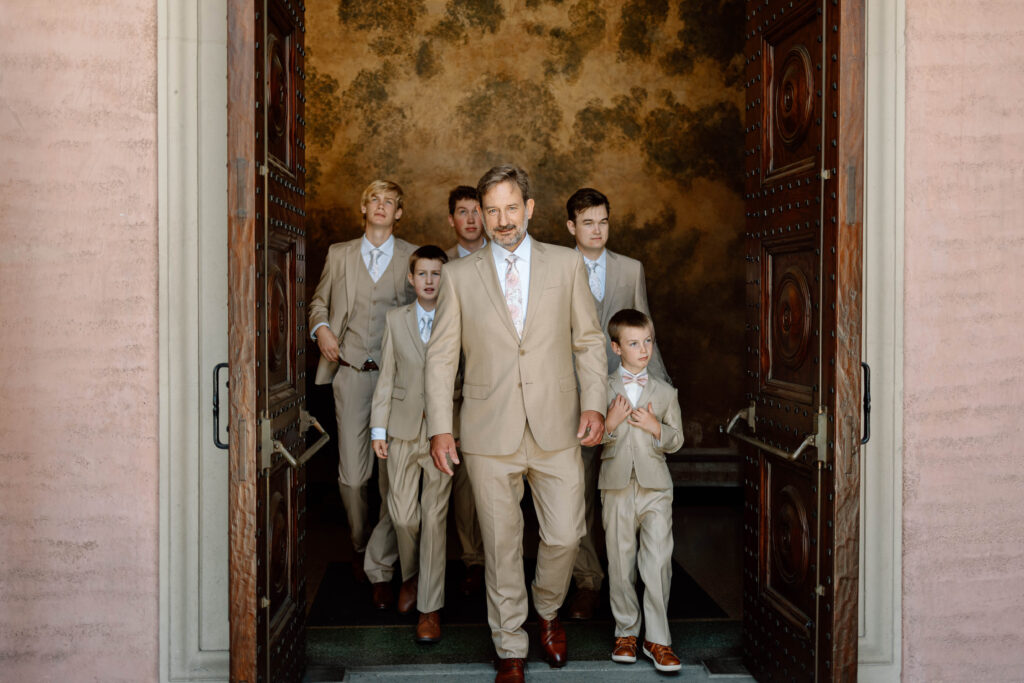
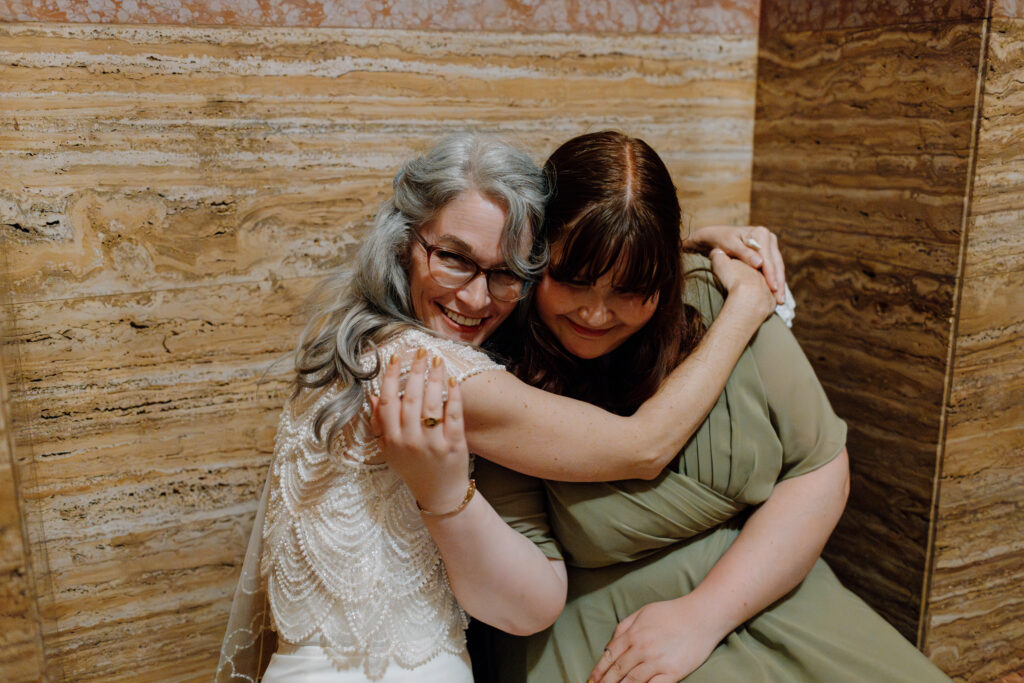
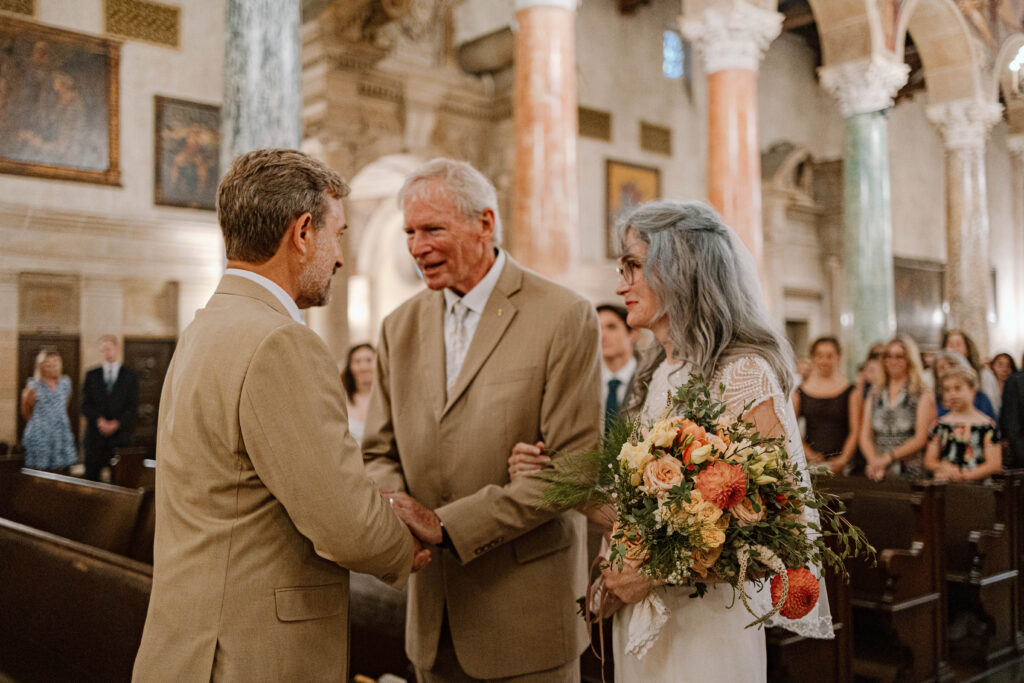
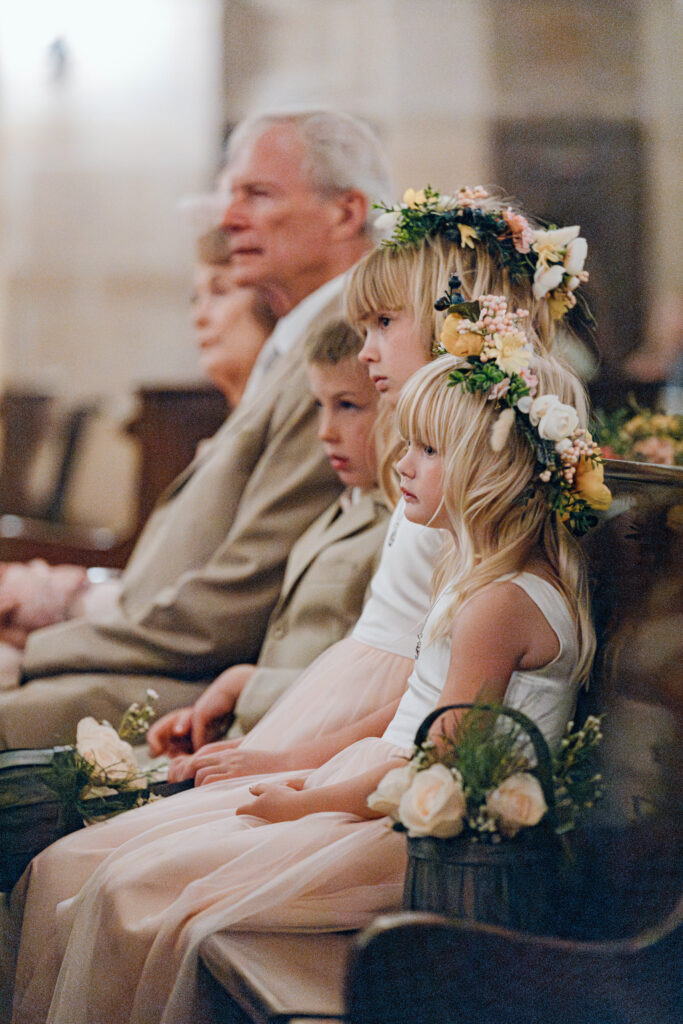
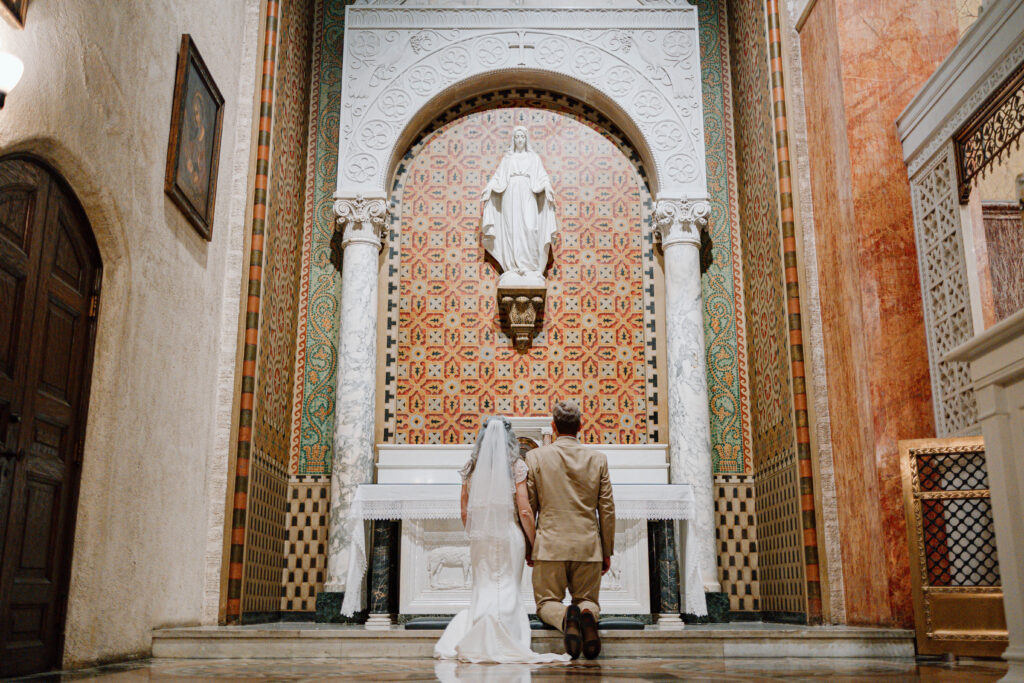
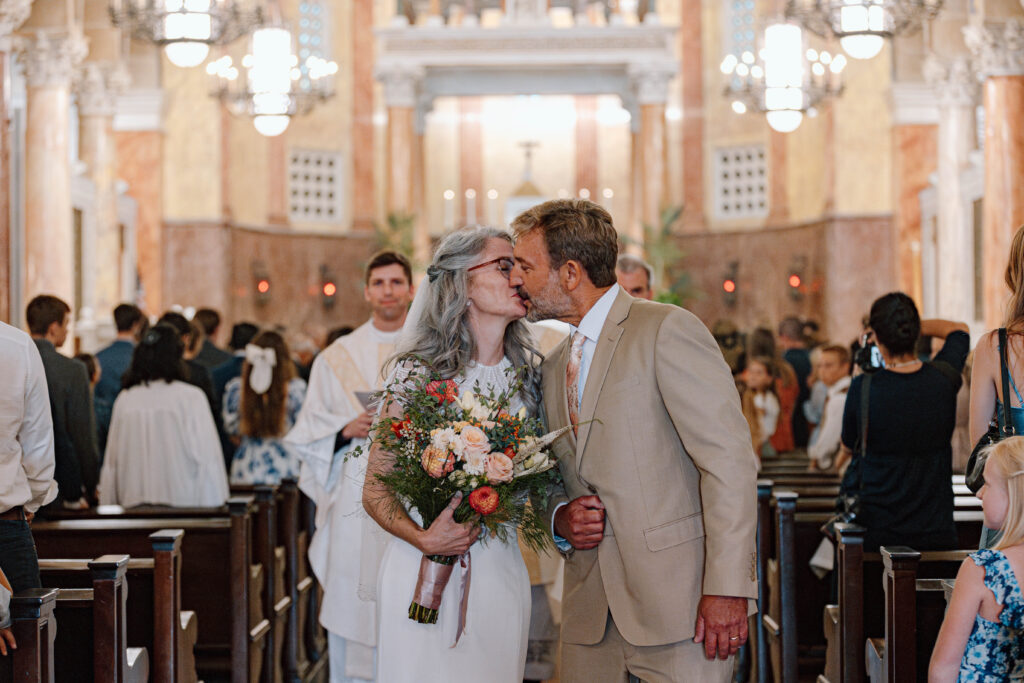
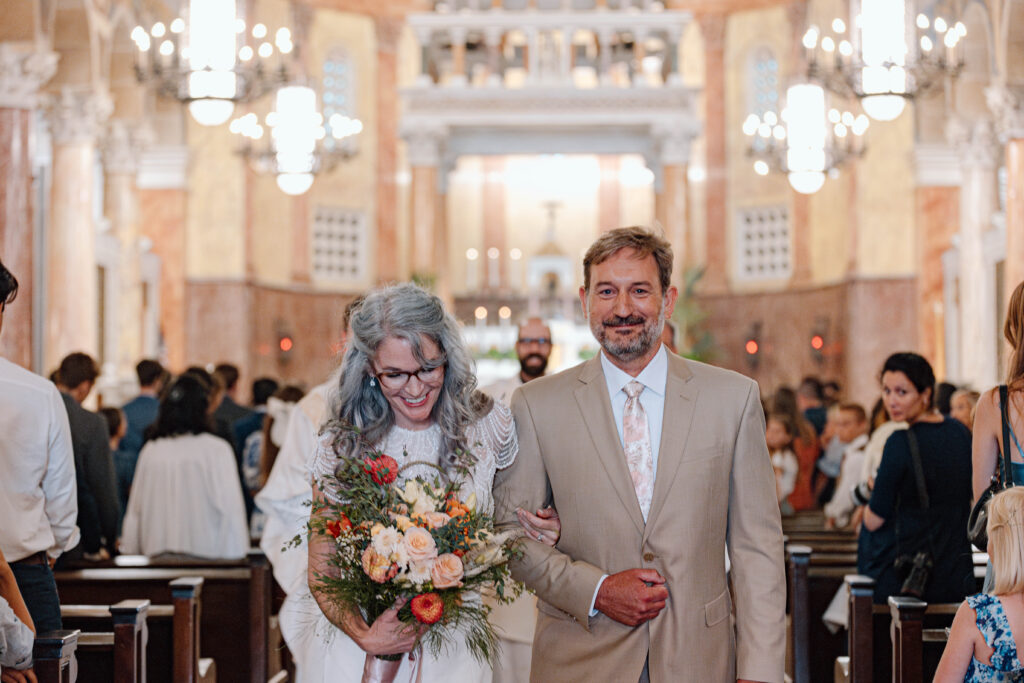
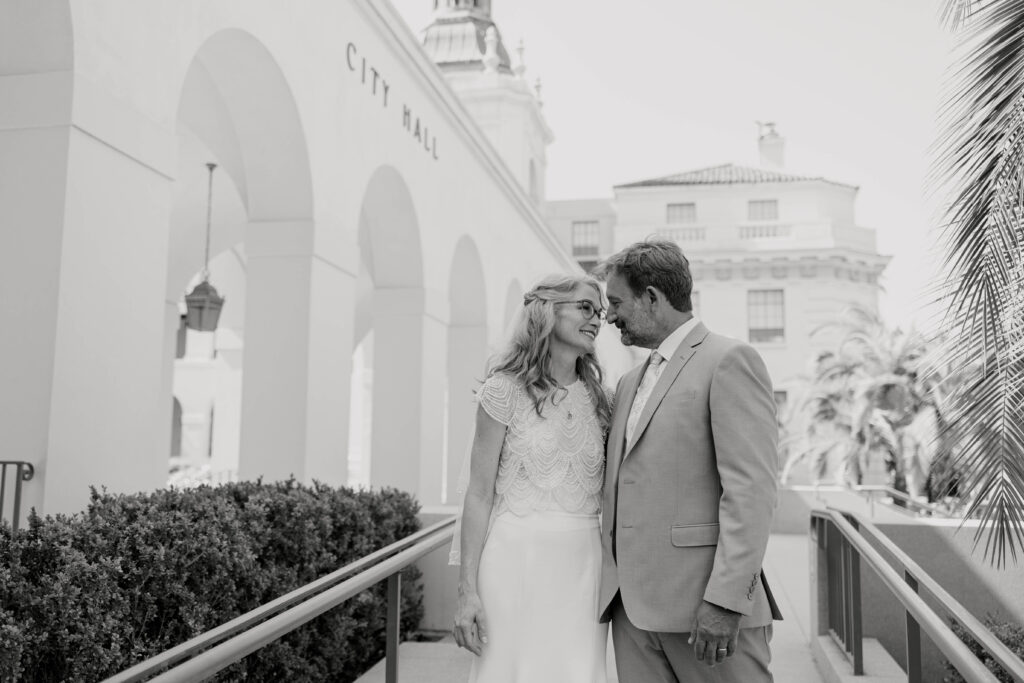
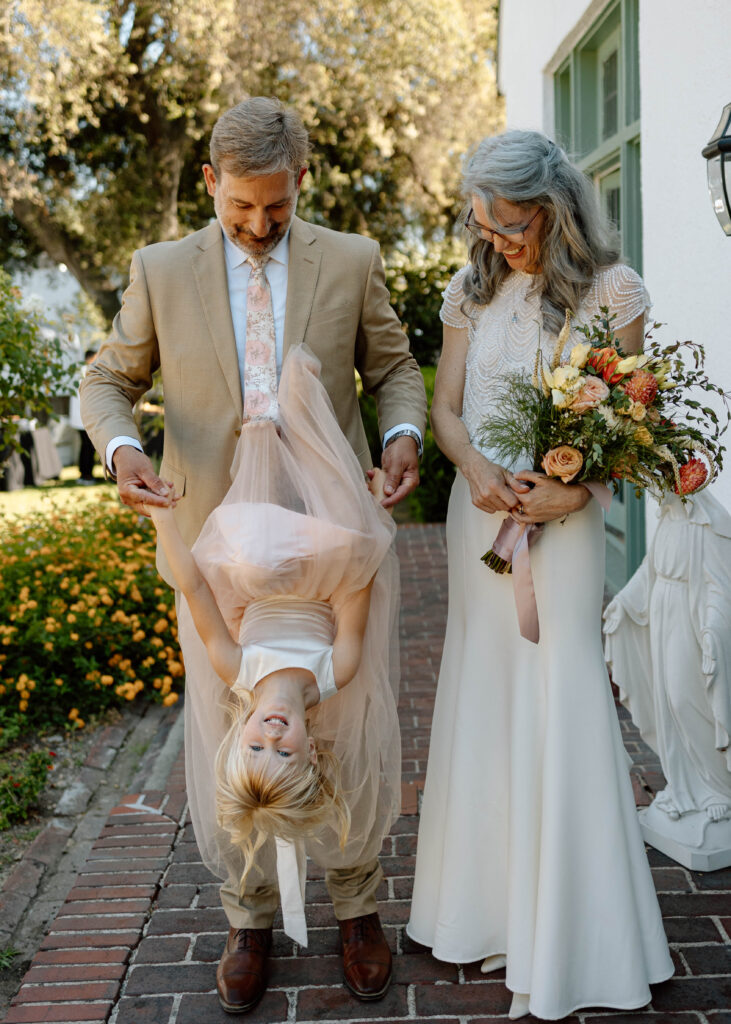
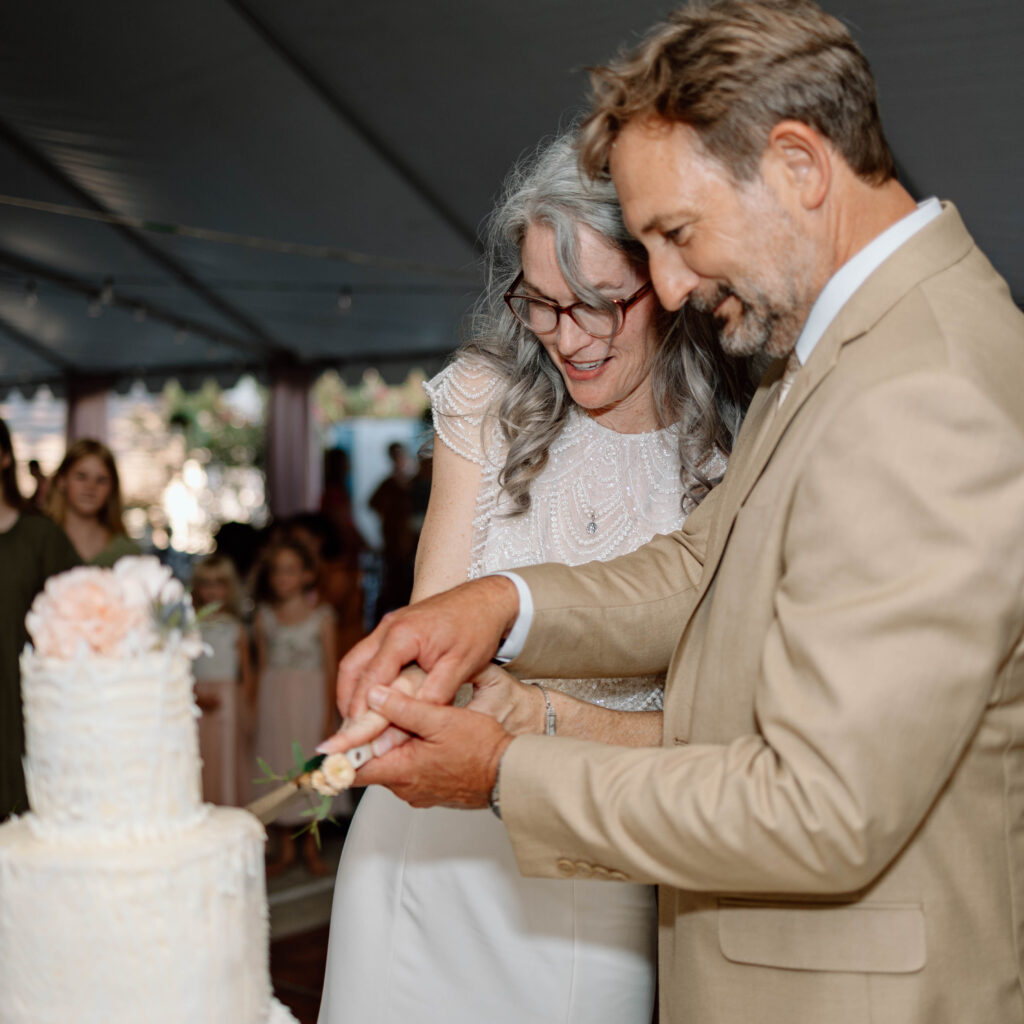
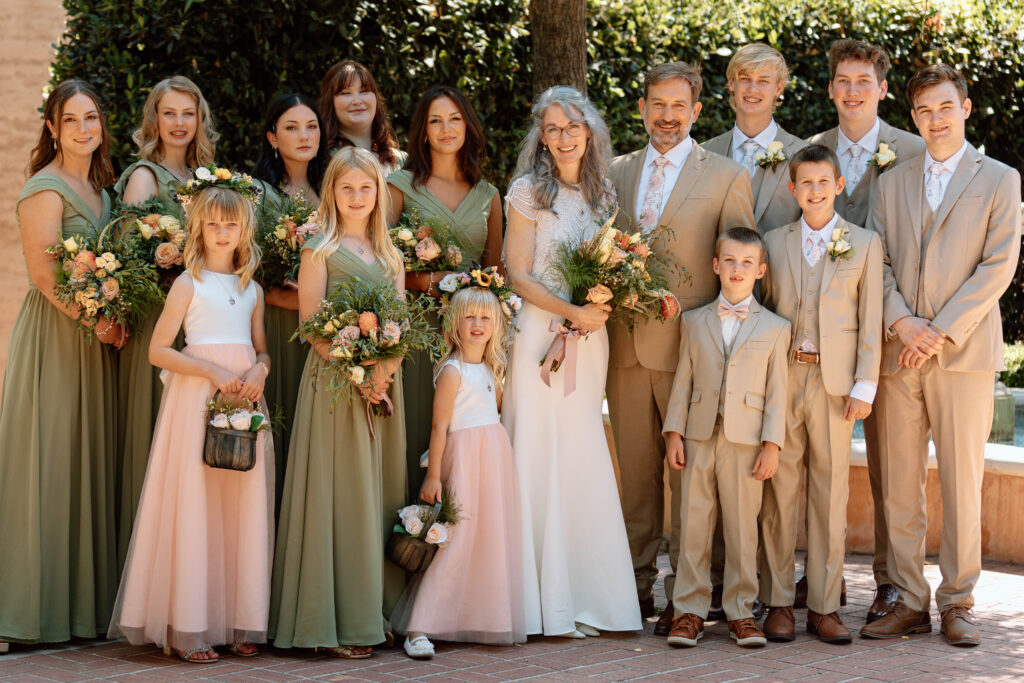
We got married five months to the day after our first date—well, Mass—together, and now, instead of being an empty-nester, with, like, hobbies and whatnot, he’s been doing math homework with little kids and heaving things into a giant dumpster all week, because you just never know what’s going to happen when you let God take over.
Thanks for being here today!
P.S. The 2025 Liturgical Wall Calendar just dropped in the CAY Marketplace and, you guys, it’s the most beautiful one yet! It has artwork featuring a different liturgical living tradition from each month and we can’t stop looking at it 😍😍
Grab one for your home here!
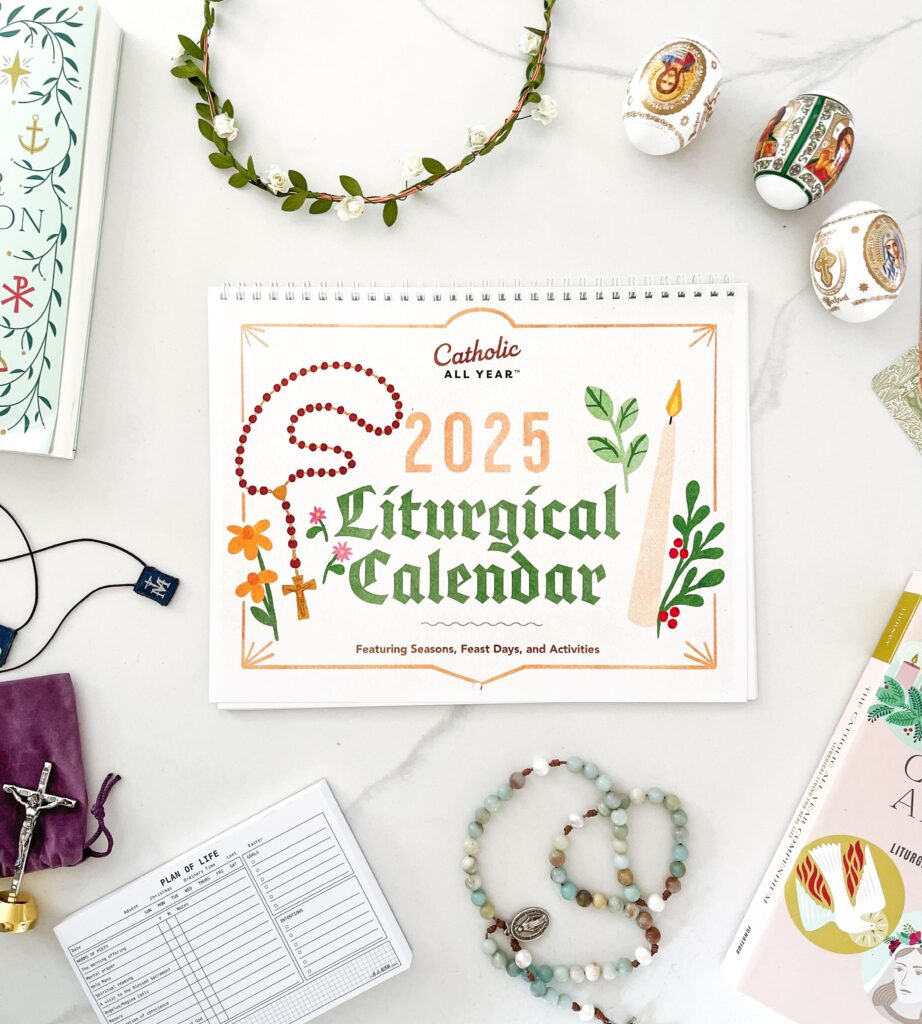
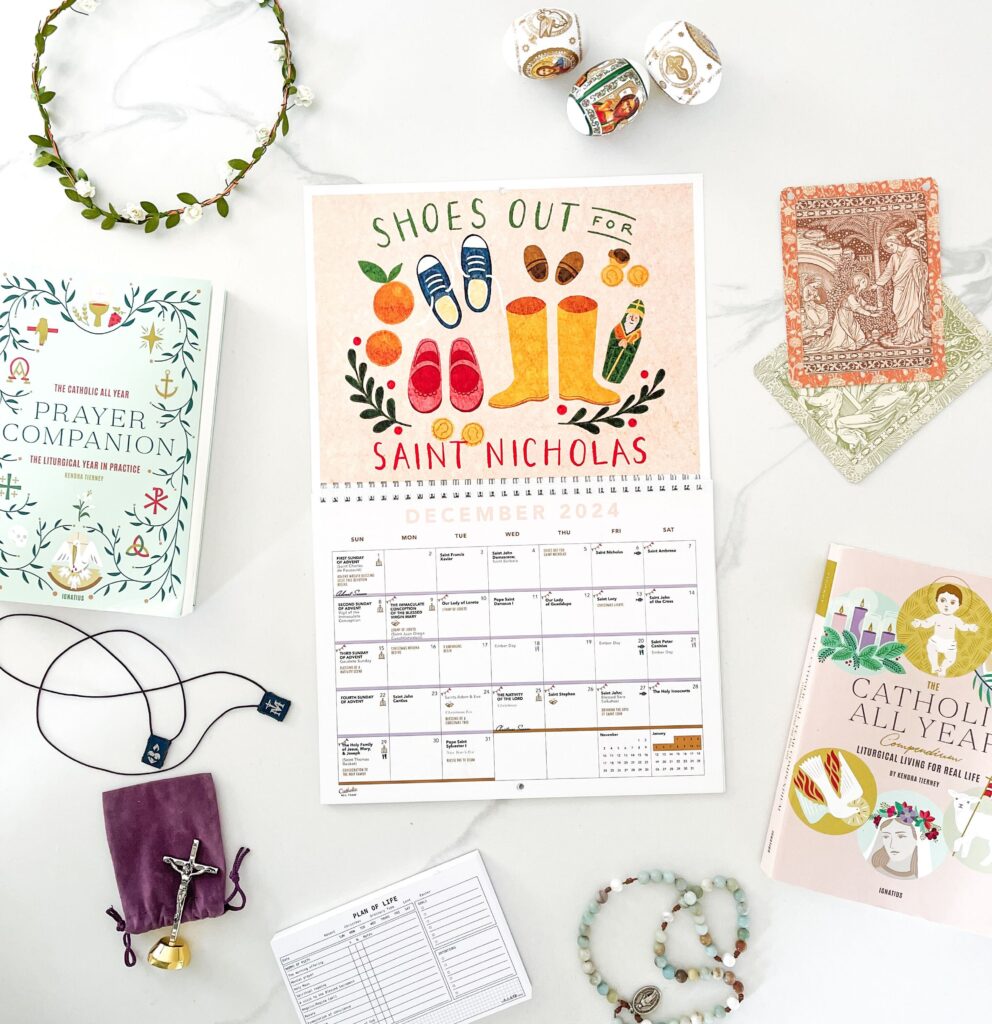
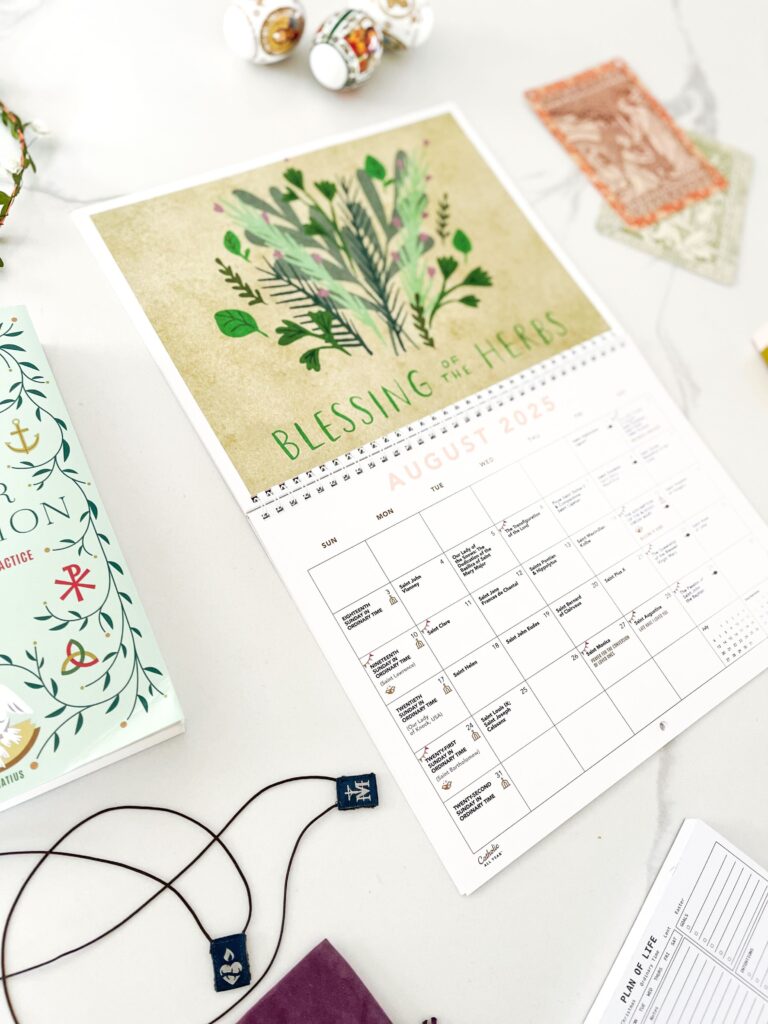
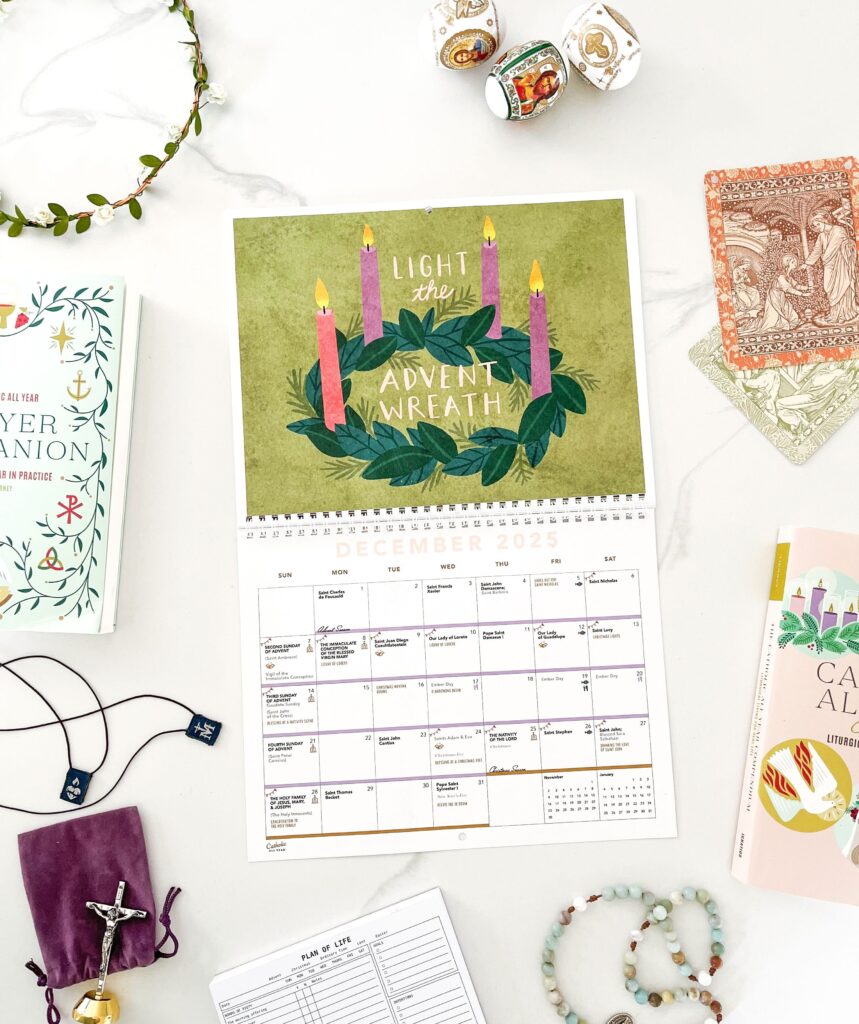
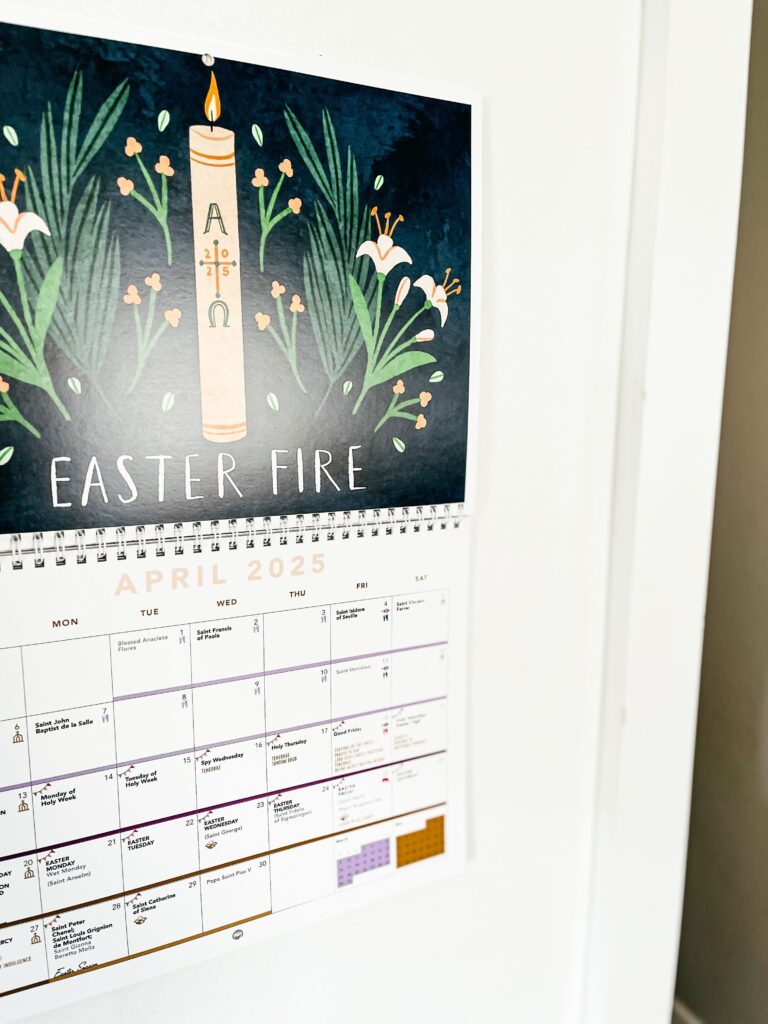
P.S. If you’re a CAY Member your FREE Liturgical Wall Calendar is on the way already! And if you aren’t a member you can learn more and join us here, and we’ll send you a FREE calendar too!

